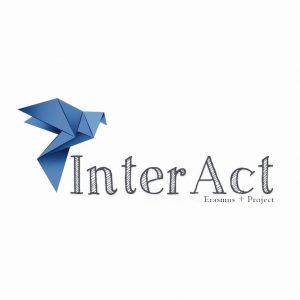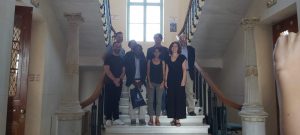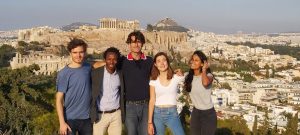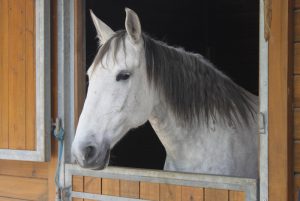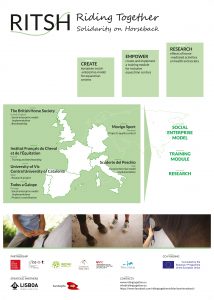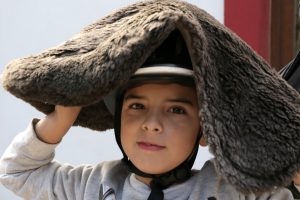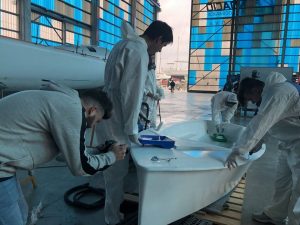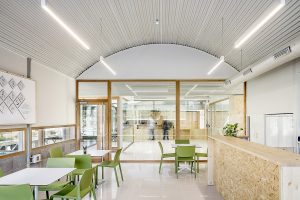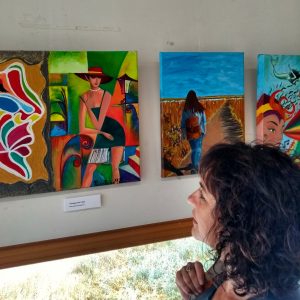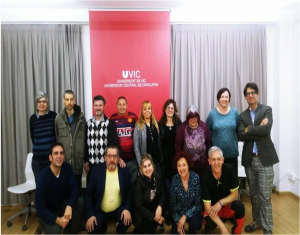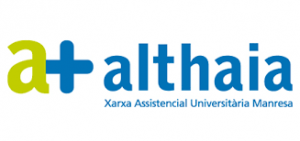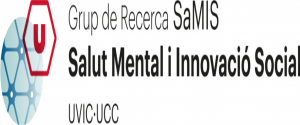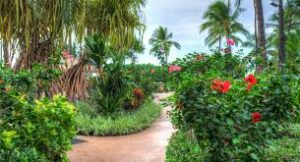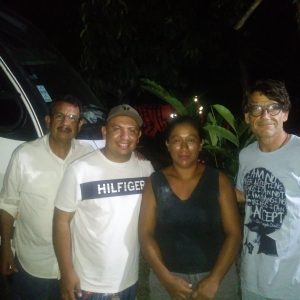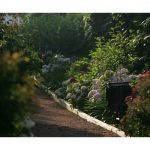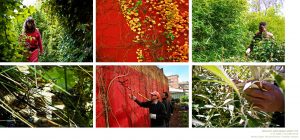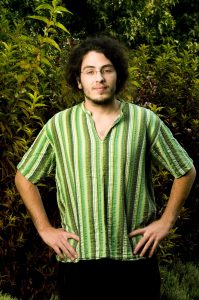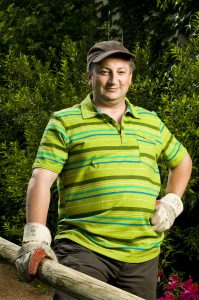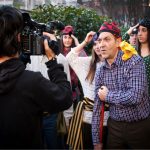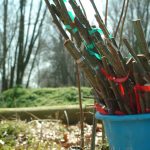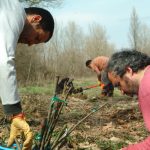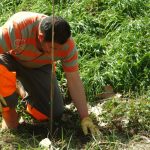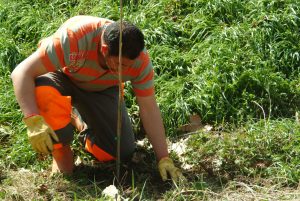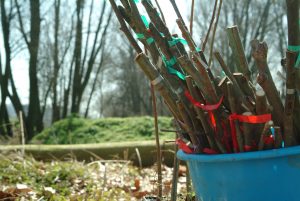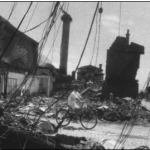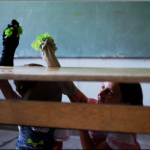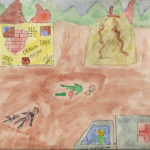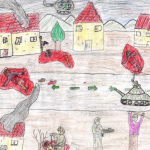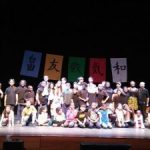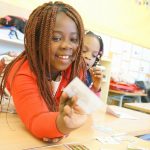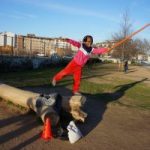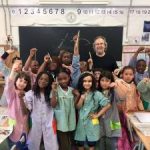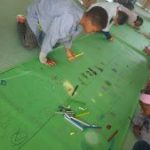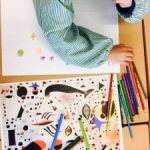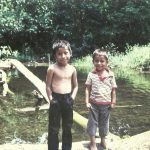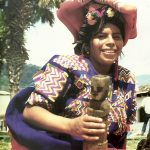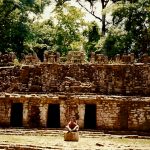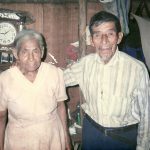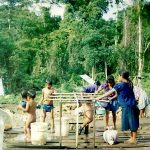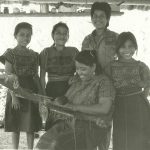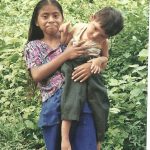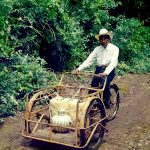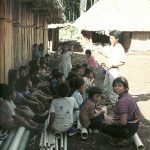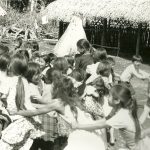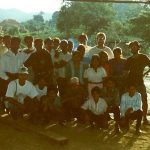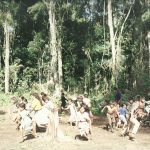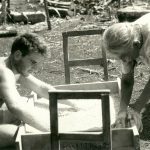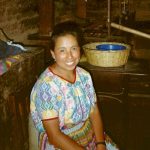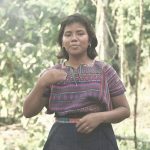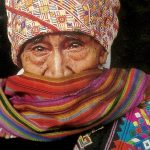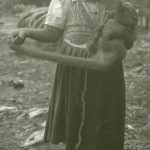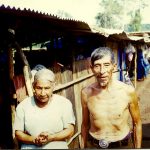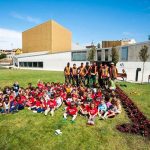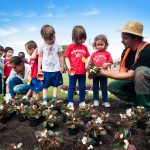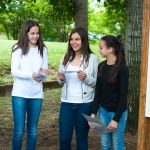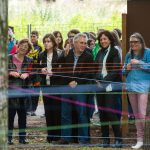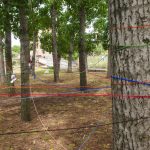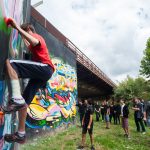
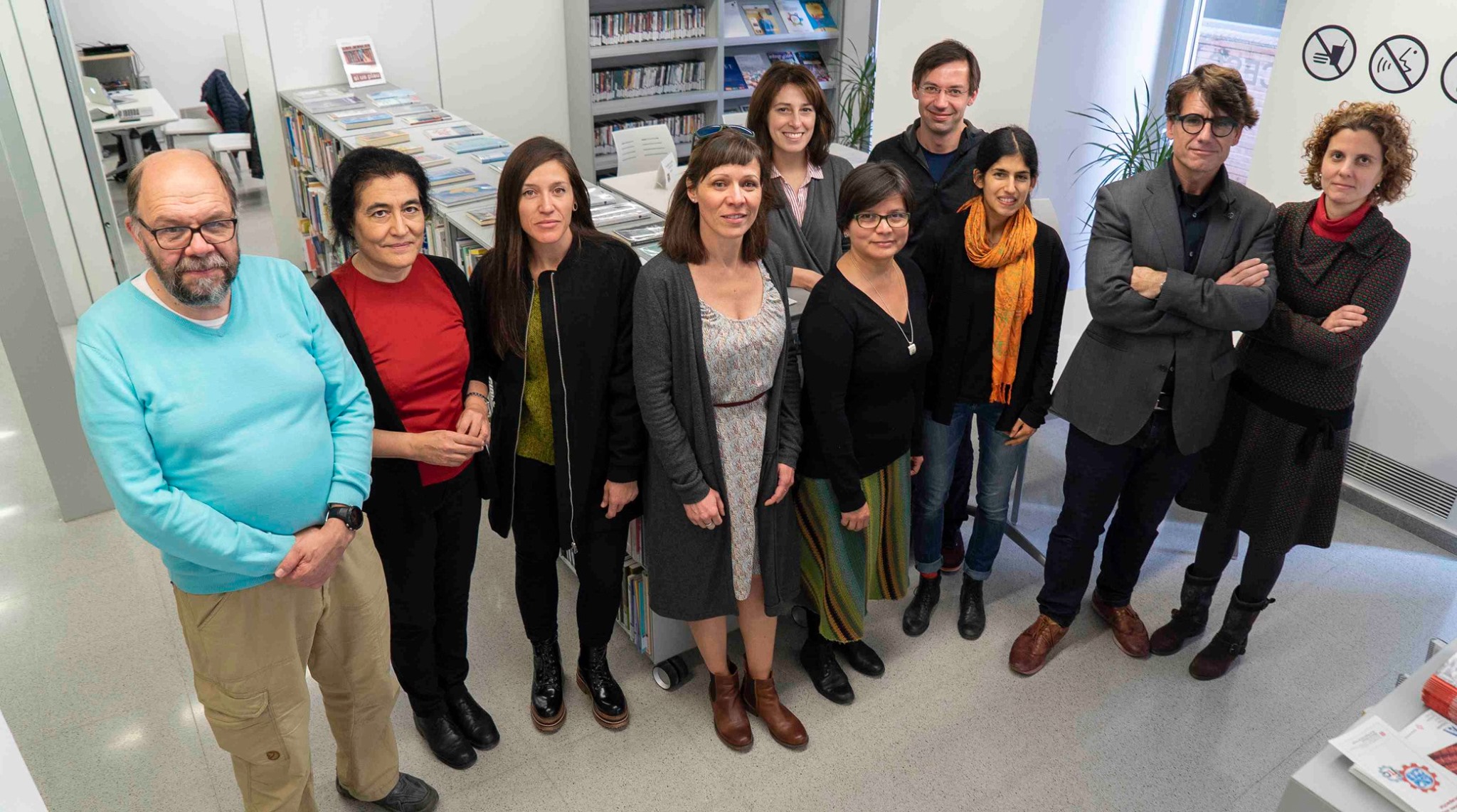
(EU) Interdisciplinary cooperation for psychosocial attention with refugees INTERACT
INTRODUCTION
InterAct – Interdisciplinary Cooperation in Psychosocial Interventions is a project funded by the European Union whose purpose is to create the best psychosocial care for refugee and migrant communities, through interdisciplinary cooperation. The project has a research dimension.
Project in partnership with UVic-UCC, Karolisnka Institutet, Hogeschool Berlin, National University of Athens, HCI Productions.
Team: Sarah Scheer (IP), Margarita Mondaca, Ramon Grützner, Eric Asaba, Manuel Guerrero, Eirini Adamopoulo, Ama. Auvinen, Salvador Simó.
Under development.
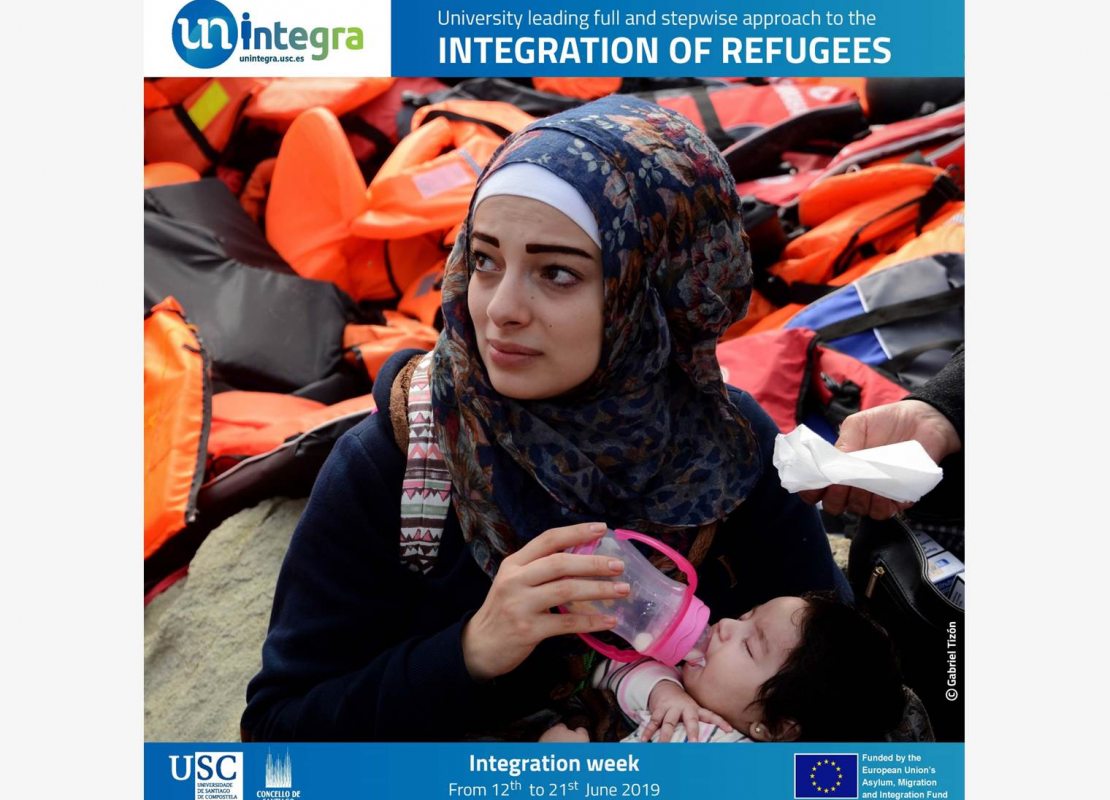
(EU) Inclusion of migrants and refugees UNINTEGRA
INTRODUCTION
UNINTEGRA project was led by he University of Santiago de Compostela (Spain) with the participation of National and Kapodistrian University of Athens (Greece), Universidade do Minho (Portugal), Fundació Acsar (Spain), Fundació Universitaria Balmes (Spain) and Concello de Santiago de Compostela.
The UNINTEGRA project was co-funded by the Asylum, Migration and Integration Fund (AMIF) of the European Commission, with a financial contribution of 744,638.78 EUR.
The duration of the project was 24 months and its period of implementation runs from 1st December 2017 to 30th November 2019.
Objectives
UNINTEGRA aims at efficiently managing immigrant populations while responding to the needs of those in need protection, at two levels: first, by directly working with new arrivals to address basic needs of inclusion, in conjunction with fostering receptive attitudes in target communities, and secondly, by establishing a normative framework in each host community.
At a more specific level, we aim at:
- Acting as an early intervention stage in the migration process by providing refugees in refugee sites and centers with the psychological, emotional and educational resources necessary to empower them (with special emphasis on youth, young mothers and women) in addressing and processing challenges related to relocation.
- Enhancing the opportunities and capacity building of refugees by offering them and the professionals in the host communities with specific training opportunities.
- Facilitating the relocation process by providing follow-up support in conjunction with assisting institutional and social sectors in successfully facing the challenges often associated with cultural, social and regulatory integration.
- Encouraging the social and economic participation of refugees from third countries in the host community through measures designed to eliminate stereotypes in these communities, paving the way to combat cultural and racial segregation and social exclusion.
- Fostering academic integration of refugees at Higher Educational level.
RESULTS
VISUAL IDENTITY
WORK PACKAGES’ DOCUMENTS AND RESOURCES
WP1
- Analysis of state of play
- Proposal of protocol of validation of academic competences and credentials of third country nationals
- Video-documentary
WP2
- Research project for inclusive integration
- Integration WeeK
- Publication “People” (Exhibition by Patricia Muñiz and Gabriel Tizón)
- Integration Guide for Refugees in Europe. It includes:
WP3
- Report on activities/tools implemented and lessons learnt
- Video summary of WP3 activities
- Video summary of WP3 activities (2)
WP4
WP5
- Training to Social Agents (programme of the course)
- Training to Social Agents (content of the course)
WP6

(EU) Social inclusion and well-being of children: RIDING TOGETHER
INTRODUCTION
Riding Together – Solidarity on Horseback known as RITSH, aims to promote social inclusion and equal opportunities using horse-mediated activities, within an international partnership between organizations from six European countries: The British Horse Society (BHS, United Kingdom), Institut Français du Cheval et de l’Équitation (IFCE; France), Movigo Sport (Germany), Scuderie del Peschio (SdP; Italy), University of Vic – Central University of Catalonia (UVic; Spain) and Todos a Galope (TaG; Portugal). Riding Together – Solidarity on Horseback was developed with the support of the Erasmus+ Programme of the European Union.
The World Health Organisation understands health as a complete state of well-being, that can only be achieved in a healthy and inclusive community. Sport and leisure activities, in a natural environment, are key to enhancing human well-being and they are also a powerful tool to promote social inclusion. Equestrian activities fall into this category as they have important health-enhancing effects, however, in today’s society they are only accessible to an exclusive minority.
Along with the benefits of taking part in sport, establishing a relationship with a horse has incredible effects on an individual’s well-being, meaning activities with horses are often used with therapeutic goals in mind. Equestrian activities can help develop self-esteem, personal and social skills and can therefore be an empowering tool to fight social exclusion and poverty, especially in children. By providing equal access to equestrian activities, this project aims to promote social inclusion through sport, as well as increasing participation in equestrian sport, which we know to be a health-enhancing physical activity.
This collaborative partnership aims to contribute towards social inclusion, through equestrian activities, whilst ensuring that this and future projects in this domain are economically sustainable and grounded on evidence-based practice. For this purpose, RITSH will create, implement and disseminate a European model for a sustainable social enterprise which is dedicated to horseback riding and horse mediated therapy for all. This model will help organisations to promote such enterprises in local contexts and to acquire relevant skills, knowledge and competencies in order to succeed.
RESULTS
Riding Together – Solidarity on Horseback’s main goal is to create, implement and disseminate a model for a social enterprise which is dedicated to horse-mediated inclusion at a European level. This model can be used to replicate such social enterprises in other local contexts across the World. The model is summarized in the good practices guide created by the partnership*, which includes:
1) A sustainable social enterprise (or business) model for a riding centre dedicated to horse-mediated inclusion;
2) A training framework that defines the knowledge, skills and competencies that are essential within a team who is involved in the creation of such a riding centre;
3) The results of a scientific research about the effects of horse-mediated activities on well-being and social inclusion of children at risk.
Check the publication Horsemanship as a tool for social inclusion – a good practices guide to develop a successful social enterprise around equestrian sport.
Watch also the social documentary about Riding Together – Solidarity on Horseback!
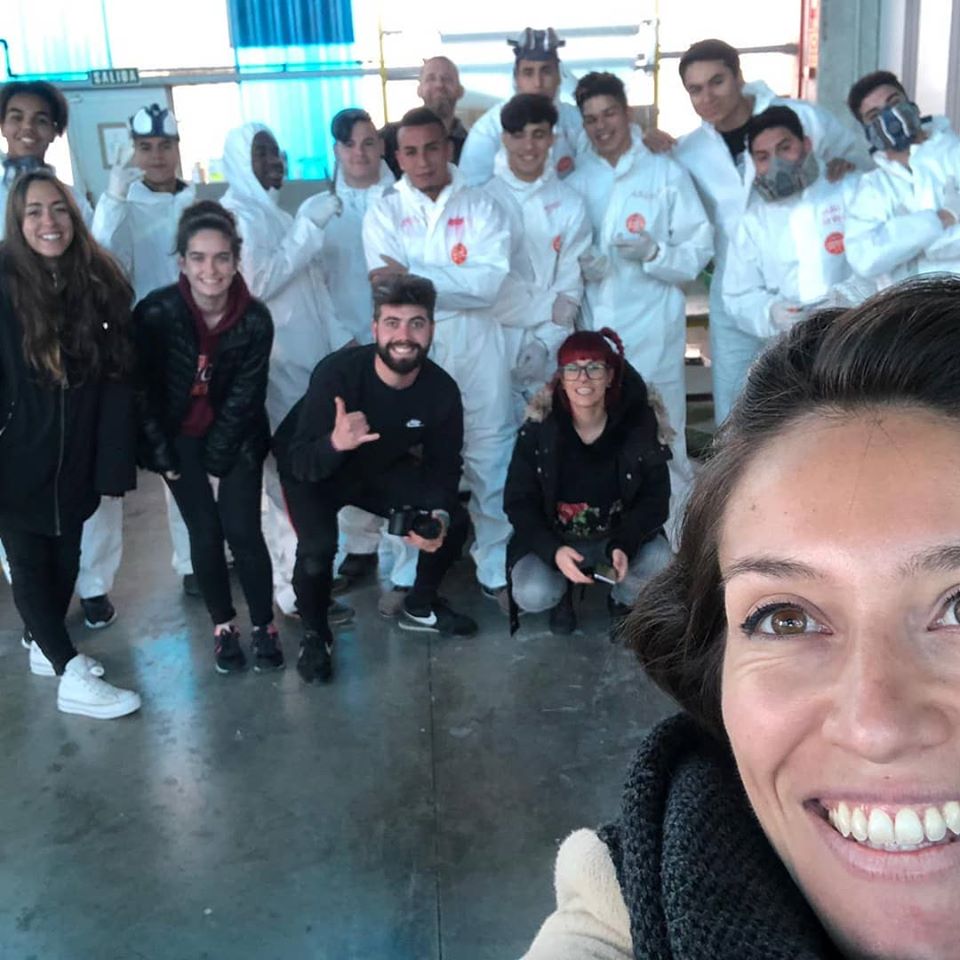
Job and Social inclusion of teens: INSERMAR project
INTRODUCTION
Job and social integration project for young people with social exclusion problems. It is based on training young people as boat mechanics and sail monitors.
Project in partnership with the Catalan Sailing Federation and With CARES. On this project we develop a mixed investigation.
Under development.
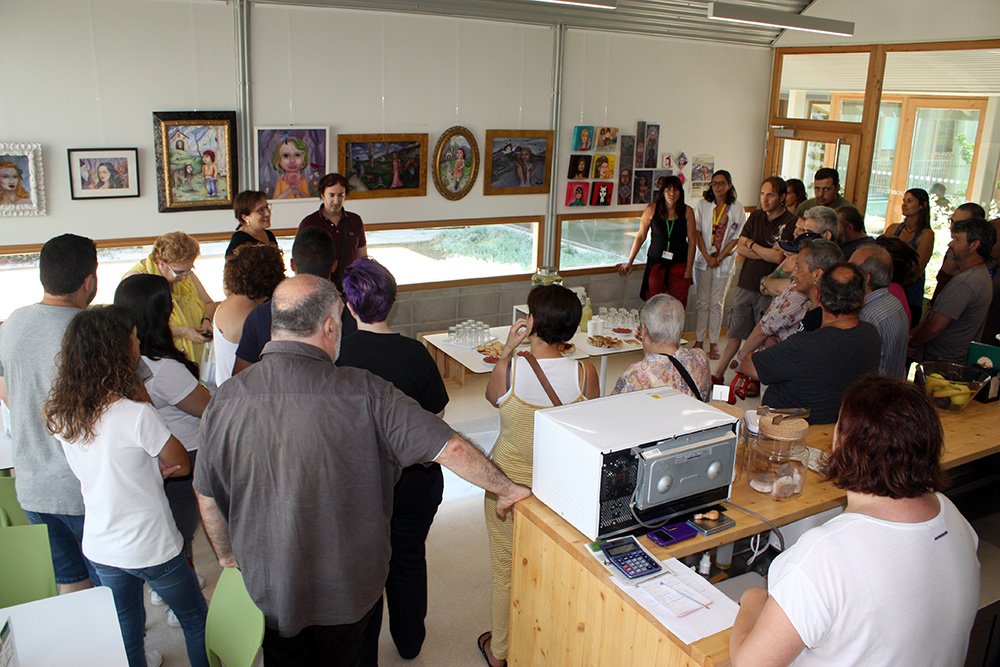
Job inclusion, entrepreneurship and mental health: BioArtCafé project
INTRODUCTION
BioARTCafé is a social entrepreneurship project. Its purpose is the job placement of people with mental illness and combat the stigma that hangs over mental illness.
It has materialized in a café based on a culture of ecological products produced in the horticultural garden of the center and in kilometer 0 (Bio), being a literary café that organizes artistic events for the community (Art).
Partners: Osonament and UVic-UCC. The project was initially financed by Obra Social de la Caixa through the Competitive Call for Social and Labour Insertion.
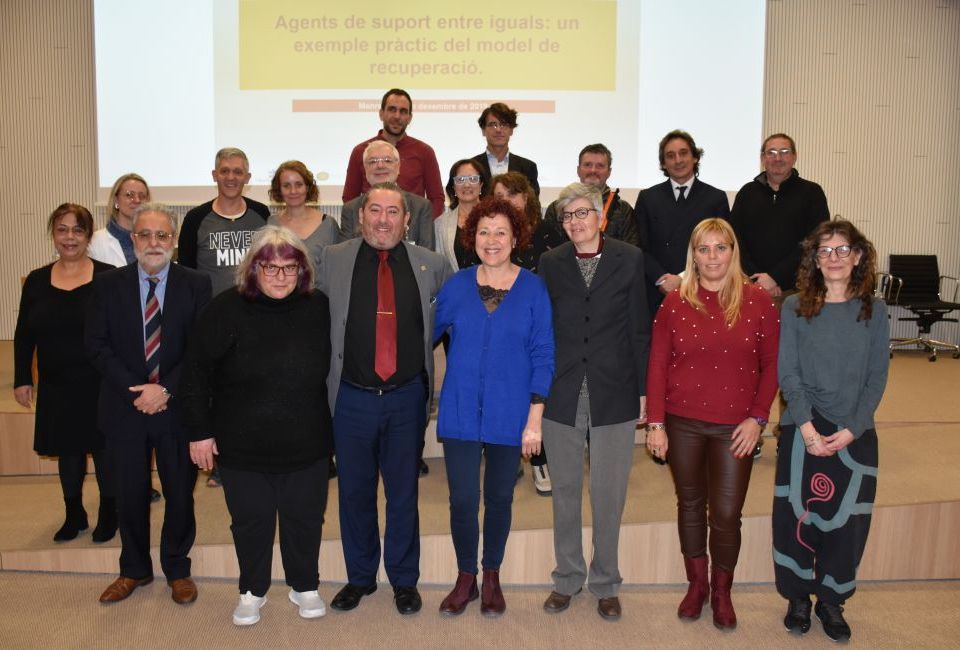
Job and social inclusion, mental health and Recovery: Peer to Peer project
INTRODUCTION
The Job placement project for people with mental illness problems: Peer to Peer has trained, accredited and hired people with problems of mental health, incorporating them as support agents in mental health teams. It is based on the philosophy of Recovery, which starts from the strengths of the participants.
Ser has developed with Althaia (IP Dra. Gemma Prat), Osonament and UVic-UCC. It has been financed by Obra Social de La Caixa via the national call for Social and Labour Inclusion.
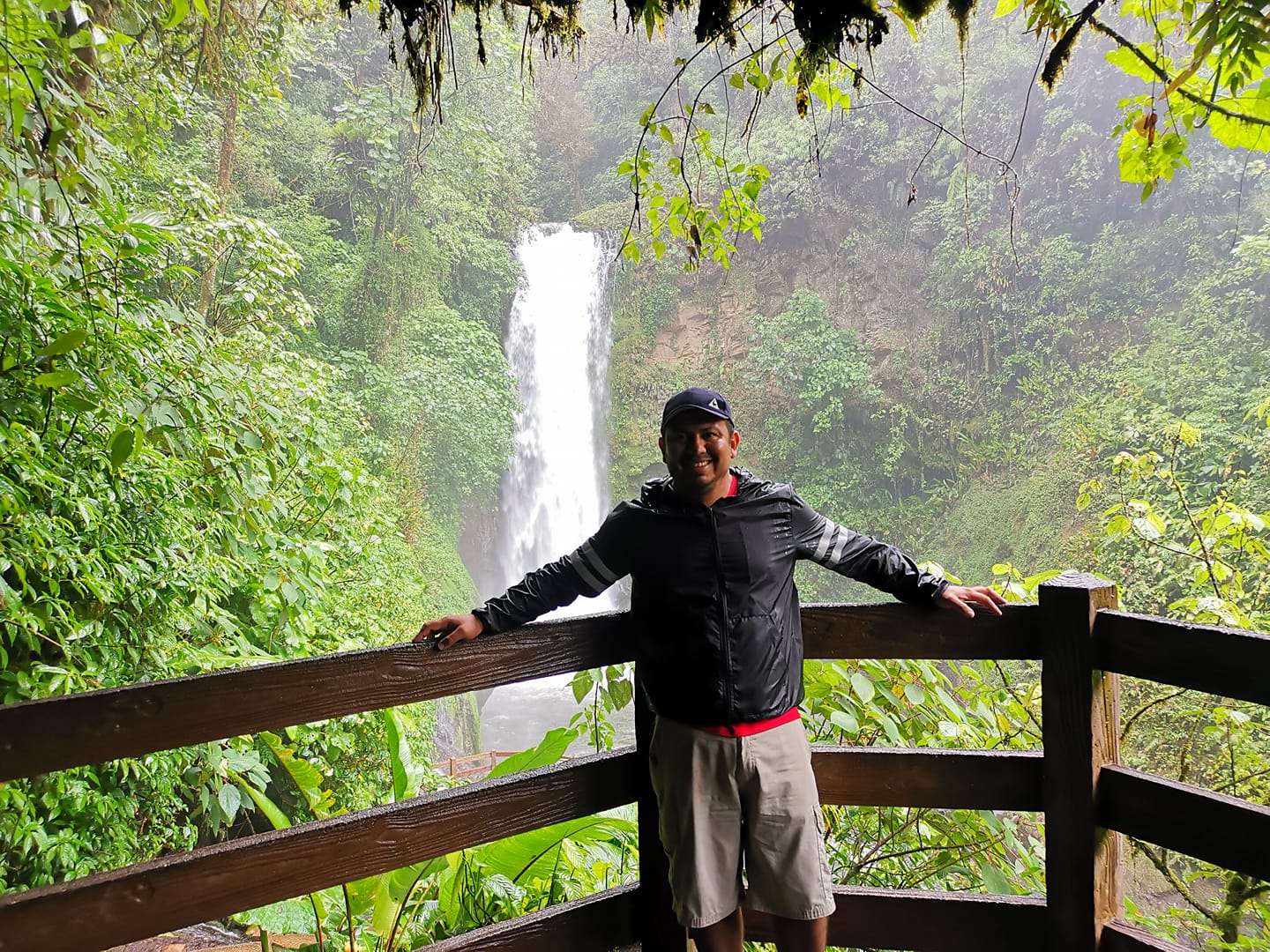
Job inclusion, entrepreneurship and mental health: Creation of a botanical garden
INTRODUCTION
The purpose of the project is to create a Botanical Garden in the framework of the National Psychiatric Hospital of the capital of San José de Costa.
The objectives are the creation of green spaces for citizenship and environmental education, the labor inclusion of people with mental illness and the fight against stigma in relation to mental illness.
The project is led by the National Psychiatric Hospital of Costa Rica, with Alexis Cruz Alvarenga, professor at the University of Santa Paula, among others.
Under development.
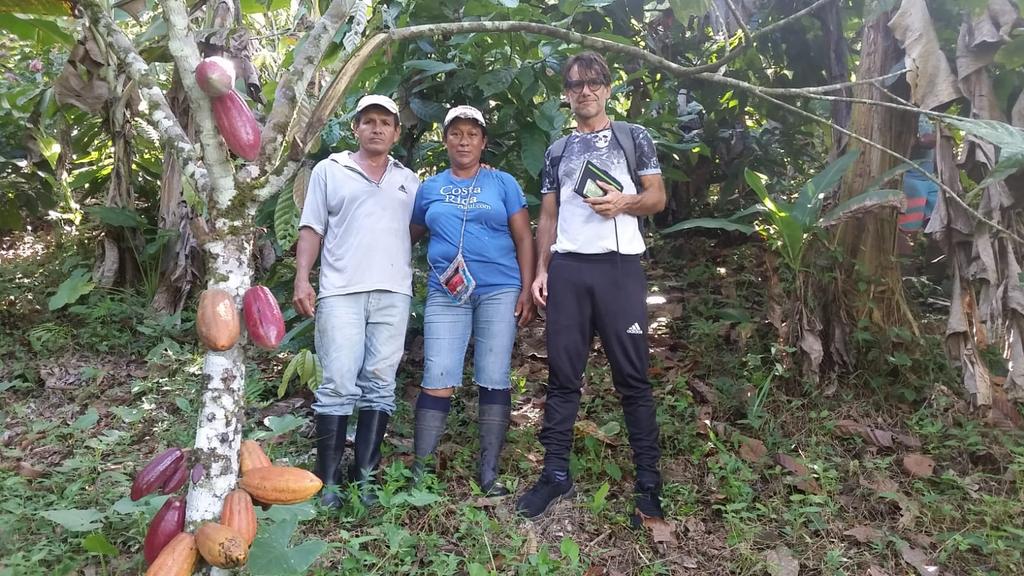
Job and Social inclusion, entrepreneurship and ecology: Creation of a chocolate social business
INTRODUCTION
The project is based on the creation of a social business to produce chocolate in Costa Rica. The cacao will come from the indigenous Bri-Bri areas of the country, which will become organic cacao plantations. The elaboration of the chocolate will be with the users of the National Psychiatric Hospital.
In collaboration with the Bri-Brí communities, the National Psychiatric Hospital, especially with Alexis Cruz Alvarenga, and Pedro Adonay.
Under development.
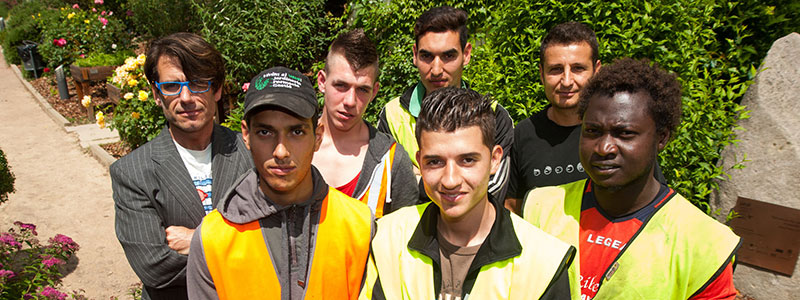
Job inclusion, ecology and mental health wellbeing: Miquel Martí i Pol garden project
INTRODUCCIÓN
- VIDEO The project
- VIDEO Initial state of the land
- VIDEO Creation process
- VIDEO Inauguration
- VIDEO Diploma ceremony
- Photo Gallery
SERVICE LEARNING: This is a SL project with the participation of Occupational Therapy students from UVic-UCC.
Partners: UCC project with the City Council of Vic. With the support of Obra Social de la Caixa, Rotary Club, Jaume Gil and VICREU. With the participation of CARITAS and the Fundació Center Mèdic Pspicopedagògic d’Osona.
Recognitions:
- GOOD COMMUNITY PRAXIS by the EUROPEAN UNION_MINISTRY OF LABOR (2013);
- GOOD PRACTICE by the UNESCO GLOBAL UNIVERSITY NETWORK FOR INNOVATION (2013);
- GOOD PRAXIS IN THE FIGHT AGAINST POVERTY for the EUROPEAN UNION (2010).
The poet and teacher Miquel Martí i Pol (1999), who experienced occupational dysfunction for more than thirty years, told us: Beauty is your heritage, but you prefer the sad and routine laziness of a cardboard box … Let me say that already it is time to love, that it is time to believe in wonders and that someday there will be flowers in the garden and wind in the trees … Those who have lived far from the town for many years will be called to return. From these words emerged the determination to give reality to the Miquel Martí i Pol project: to transform an abandoned, sad and routine space into a space of beauty, a garden. A joint creation, between Occupational Therapy students and those who have lived many years away from the town, due to a situation of social exclusion, related to mental health, poverty or immigration.
The project has had the following dimensions:
1.1. Therapeutic
Gardening allows to reconnect the human being, today immersed in a cyberworld, with the natural environment. It favors the capacity of introspection, of connecting with oneself, as well as a feeling of relaxation and well-being. At the same time it is a social occupation. It involves performing physical exercise, developing motor skills, but also cognitive and affective. It involves adopting the role of caretaker and gardener to people who have had the role of sick or excluded. It is an aesthetic experience, of creation, an experience that borders on art. Gardening is a metaphor for the recovery process. During the winter we must strive, even if we do not see the results, in the hope that they will come in the spring.
1.2. Building inclusive communities
The philosophy of the program lies in the principle of occupational justice (Townsend and Whiteford, 2006), understood as the promotion of social and economic change to increase individual, community and political awareness, resources, and equality of opportunities for the development of occupations that allow people to reach their potential and experience well-being. We are interested in creating inclusive communities, understood as communities where all people can participate as citizens (Cortina, 2005) with full rights despite any occupational dysfunction. Beyond people learning a job role, the goal was to educate society about the potential of these people, breaking prejudices. The work of the users has produced a garden for the community. We believe that this reality-based discourse, magnified by the media, is one more step to help society understand that they are full citizens.
1.3. Educational
Ann Coffey tells us (quoted in Houghton 2003): “There can be no better place than our educational centers to begin the greatest task of Humanity, that of reconnecting ourselves to our natural world” (p. 23). The Occupational Therapy students have participated in it developing a reality-based learning from Occupational Therapy, but also in the ecological field, basic to the eco-cide that we confront. The community itself has also been educated, showing the potential of people so often cut off by stigma and social prejudice.
1.4. Research
Sempik and his collaborators (2003) evidenced the lack of scientific evidence to support the use of gardening. That is why the research carried out is novel and contributes to generating lines of study that allow us to delve into the therapeutic impact of gardening, and how it contributes to social inclusion, through the creation of more inclusive communities.
THE PROJECT
Two key initial questions in the process were: Where will users come from? How can we finance it? This is how we started a policy of strategic alliances. The users of the project, whom I will refer to below as gardeners, have been referred by Caritas Arxiprestal, the Fundació Center Mèdic Psicopedagògic d’Osona (FCMPPO) and Mesures Penals Alternatives.
The inclusion criteria was for people in a situation of social exclusion, motivated to garden. Funding was obtained through the Fundació Caixa de Sabadell, Rotary Club Osona, Consell Comarcal d’Osona, Ajuntament de Vic and the University of Vic itself.
The project, coordinated by Occupational Therapy, has been an amalgam of public institutions, social and business, and highlights the need to develop our political skills. The gardening sessions have been held two days a week, Tuesdays and Wednesdays, from 9 am to 11 am. The session was interrupted for breakfast. The creation process lasted 18 months, from March 2005 to October 2006. The gardeners have also acquired the role of lecturers, since they have given lectures on the project at the University of Vic and the University of Granada.
Training trips have been made, such as to the gardens of the Alhambra in Granada or the Alcázar in Córdoba; the Blanes Botanical Garden; the Botanical Garden of Valencia; or the ecological projects developed by Cáritas Menorca (among others). The project continues since then doing the maintenance of the garden. The average attendance has been 8 gardeners. Currently, our coordination with the employment guidance service of FCMPPO and Caritas has been strengthened. Five of the gardeners have been inserted in companies in the community. We have also created our website, where you can see a video of the creation of the garden, and we are preparing a social documentary.
Below we will outline the main results of the research carried out to obtain the Diploma of Advanced Studies (DEA), the Doctorate Inclusive Education and socio-educational care throughout the life cycle, from the University of Vic, University of Girona, University of Lleida, University of the Balearic Islands. This DEA was defended by the lead author in court in January 2008 with a unanimous rating of excellent.
RESEARCH
We must know reality, as Dewey (1969) indicated, to transform it, in the sense of Marx (1970), into a cycle of reflection-action, which Mounier (quoted by Esquirol, 2001) compared with the systolediástole movements of the human heart . We have delved into the knowledge of the human being as an occupational being, source of study of Occupational Science. For the theoretical basis of the project, an attempt was made to develop a transdisciplinary perspective, as Edgar Morin (1999) says, we must develop a complex perspective, overcoming the disciplinary ethnocentrism denounced by Harkavy Ira (2006). The topics raised in the research were:
3.1. Building meaningful occupation
… your hands will be of wind and light. Miquel Martí i Pol
We start from a situation of occupational deprivation and difficulty of insertion in the labor world:
“… we are lacking spaces where people can occupy their time significantly, as well as pre-employment programs …” (A.Vic).
The occupation carried out has been a significant occupation (Simó Algado 2004):
“… It is important for occupying the time of these people in a significant way…” (A.Vic).
It has involved the transition from the role of the sick to the role of caregiver, gardener and citizen:
“… the role of caretaker … knowing that the plant is alive thanks to you, you feel better about yourself …” (Placid).
“Yes, I have learned a lot, I have learned to plant, put the water pipes …” (Mustapha).
The project has increased the chances of finding a job, essential for inclusion:
“All the people who have left the same have had work, and therefore are in a normalized life, they are already flying alone” (Caritas).
3.2. Gardening as a source of health and well-being
… And that someday there will be flowers in the garden and wind in the trees Miquel Martí i Pol
Significant occupation has promoted health understood as physical well-being:
“Yes, yes, it makes you exercise, otherwise you would be at home without doing anything” (Placido).
A psychological well-being that avoids paranoid thoughts:
“… As you have an occupation, your mind clears more, you are not thinking of paranoia” (Placido).
This well-being translates into happiness:
“Yes, when you come here you find happiness” (Mustapha).
The project has improved their self-esteem:
“You can take, so to speak, one more degree in your self-esteem” (Placido).
It has brought a feeling of usefulness:
“… Because I was useless before. But not now, I feel useful for having worked here ”(Paco).
And it has promoted social well-being (Maslow 1998), breaking a situation of loneliness:
“Before, I didn’t go out of the house all year. And here I also find compatible, that when you live alone you thank him, because loneliness is very bad ”(Paco).
It has impacted the existential-spiritual dimension. Two basic dimensions are sense and connection:
“Yes, yes, I recognize him as part of me. It will last in me. Apart from medical visits, coming to the garden is the most important thing for me ”(Paco).
The sense of contributing to others is basic in the sense dimension:
“Yes, I have brought kindness between us” (Benaissa).
The garden has become a sanctuary: “… my soul likes everything it does here … it helps me open my heart” (Benaissa).
Religious experience is another path of spirituality:
“This work will help us open the doors of paradise” (Benaissa).
Nature has had a therapeutic impact on people:
“When I see plants grow I feel alive, because I see life” (Mustapha).
“When I am locked up in a place for a long time I get sick, it comes to me as anguish, in the garden you are like at home” (Paco).
3.3. The dignity of citizenship
Those who have lived many years away from the town will be called to return. Miquel Martí i Pol
The project has denoted the persistence of stigma:
“… we are in a society in which people who do not meet the standards we have established are easily left behind …” (Rector).
Work is basic to change the social perception of these people:
“… they are used only to news such as a schizophrenic pulling a person on the train, and they see that the mentally ill bring this garden to the community …” (Placido).
Gardeners’ demands are to be heard, and to have more opportunities:
“They don’t listen to us … that they found out about the disease, bipolar, schizophrenia” (Paco). “That people with mental illnesses can contribute more to the community …” (Plácido).
The project has had an empowering effect. Gardeners are able to influence their own life:
“What Martí i Pol wrote is very beautiful (your hands will be of wind and light) … if you want, you can. Even if you are wrong, you can also do important things in your life ”(Paco).
3.4. The creation of inclusive communities
In time key And with a lot of suffering. This is how we can win the fight that we have been fighting for a long time. Miquel Martí i Pol
Social inclusion has been promoted, by promoting the creation of inclusive communities:
“More people know me in two years in Vic than fifteen in Centellas … the garden has helped me to enter the community” (Paco).
Values such as justice, solidarity, freedom, equality, and active respect have been experienced in the garden:
“When you live equality … you consider yourself a person equal to the same and also become happy people” (Caritas).
There has been a social recognition towards gardeners:
“That the Rector of a university shake your hand and give you a diploma, that for me is … as if I were remarried” (Paco).
“… these people feel dignified, recognized and valuable …” (EUCS).
It has been vital that his voice has been heard:
“Look, we went to Granada to give a conference. I felt like Mr. Zapatero ”(Paco).
3.5. A University at the service of Humanity: new educational praxis
We can win new fields with every gesture And with every word we can increase hope. We will be what we want to be: Through the crystals of the frizzled west, light explodes. Miquel Martí i Pol
The purpose of the University is to educate committed citizens: “Educate so that they have a spirit of contributing to the betterment of the world and of society” (Rector).
This mission is in jeopardy:
“… The University must help society not die … If the University only provides knowledge, it is useless …” (Caritas).
We cannot ignore the risk of commodification of the University:
“Every time the University is expected to form what employers want …” (A.Vic).
The project has been a school of citizenship has supposed a transformation of the educational praxis: “It is worth more than all the talks on citizenship that some politician can give me” (Eli).
The involvement of the University in the territory has materialized:
“… for me the project is a good example of the impact of the University in the territory …” (A.Vic).
“… what I would highlight the most is that in this project the University opens up to the disadvantaged in society” (C. Comarcal d’Osona).
The project integrates education, research and social intervention:
“For this alone it has extraordinary value” (Rector).
With this type of educational praxis the structural deficit of hours of practice in teaching is overcome:
“… I considered it as a first practical contact with the profession … in the curriculum of our career, more hours of internship would be appreciated …” (Rafa).
It has involved reality-based learning, a transition from theory to practice:
“I have had the opportunity to see how through a significant activity, the person finds his bio-psycho-social and spiritual balance” (Rafa).
The students have gone beyond diagnoses to discover the person and his potential:
“… The potentials of each one of them stood out. Humanity, generosity, sympathy, commitment, companionship… ”(Eli).
The garden has been a meeting place with the Other developing his empathy:
“It has made me learn to see the world from another perspective; from the eyes of those socially mentioned as the others ”(Eli).
3.6. The art of strategic alliances and synergies
Who but each and every one in turn can create from these limits of the now the field of light where all the winds exalt the space of wind where all voice resounds? Miquel Martí i Pol
Public, social, business and university institutions have expressed the need to develop strategic alliances. The contribution of the third sector to maintain the welfare state:
“In order to maintain the welfare state, public powers and the Third Sector must be added, these strategic alliances are essential” (A.Vic).
The project is seen as a model or example to follow, at the university level as well as in social policies, influencing the meso and exo levels: “It could be an example for others, facing other careers, groups …” (Rector) .
“FCMPPO has valued the possibility of reproducing a similar project …” (FCMPPO).
CONCLUSIONS
The Miquel Martí i Pol project faithfully reflects the current paradigm of Occupational Therapy, thus articulating its central ideas. It starts from the belief in the occupational nature of human beings (Wilcock, 1998), and therefore it is based on a human occupation, in this case gardening, considered as a therapeutic agent, trying to alleviate the occupational dysfunction of users, in this case caused by psychiatric and / or social reasons (Kielhofner, 1992). The therapeutic impact of significant occupation, on health, understood as well-being, is reflected in the narratives of the students, “Checking first-hand how significant occupation has a direct influence on the bio-psycho-social state of well-being. spiritual of the person ”(Rafa).
It has also been reflected in the gardeners’ narratives. It has improved their physical well-being, by helping them exercise, “Yes, yes, where it will stop. I have to bend down and get on. Since I come to work in the garden and go to play soccer I feel better. I am at my ideal weight, I stay in shape ”(Paco). In the field of mental well-being, the relationship that a gardener makes between the occupation, which encourages and clears him, and the one without paranoia, “Yes, it encourages me, it encourages me. You feel better because as you have an occupation your mind clears more, you are not thinking of paranoia because you are busy ”(Placido). The experience of emotional well-being is closely linked to the experience of tranquility that is experienced in the garden, claiming the importance of the occupational context, “Yes, everything is very good, I feel very calm, and everything is much better than being at home, because at home there are nothing but problems ”(Benaissa); “When I’m here I don’t have bad milk, I’m calm. It gives me peace of mind to be here, I feel more open, I feel good ”(Paco). A feeling of satisfaction appears for the result of the work, “You feel very satisfied with that very beautiful task that has come out” (Placido), which directly affects his self-esteem, “You can take, so to speak, one more degree in your self-esteem ”(Placid).
Social well-being is related to feelings of belonging, both to the group, “Yes, I feel part of the team, before I did not know them and have been getting to know them one by one, now we call each other for coffee” (Mustapha); as the community, “Yes, now I feel integrated into the community” (Benaissa).
Regarding the central point of view, the project has been based on a holistic vision of the human being, defined by me as a bio-psycho-social being, whose essence is spiritual immersed in a cultural and ecological environment (Simó Algado and Burgman, 2004 , 2006). The spiritual dimension is the most controversial, without a doubt. The gardeners themselves have referred to concepts such as the soul to explain the impact that gardening has had on them, “… because my soul likes everything it does here, all the sight and aroma makes me feel good” ( Benaissa). We have verified this dimension of spirituality as it relates to the dimensions of meaning and connection. The experience of meaning is related to having contributed something to others, “Yes, I have brought kindness between us” (Benaissa). The feeling of connection is related to the garden, acquiring a nuance of transcendence, “Yes, yes, I recognize it as part of me. It will last in me. I will always remember him and whenever I need to, I will be here ”(Paco). Thus the garden becomes a kind of sanctuary, “Yes, of course, when I see the garden, it helps me open my heart” (Benaissa). The connection also relates to others and society, recovering the role of citizens. Dürkheim, quoted by Thibeault (2003) talking about the different real paths of spirituality. Among them I mentioned art, the garden has undoubtedly been an act of creating beauty, as recognized by gardeners “Yes, because from a land that was fatal, left to the hand of God and with the hands of God, it is to say, ours, we have managed to transform it into a beautiful garden ”(Paco); as by the institutions themselves “… an abandoned, ugly space becomes a beautiful place … it is beautiful to think that the community can have a garden, a place with flowers, butterflies and birds” (Rector of the University of Vic). Another real path was that of religious traditions, as has been clearly shown in the research, “I like to take care of trees and plants because they are creatures of God … this work will help us open the doors of paradise, God loves people they do good things ”(Benaissa).
Therefore, meaningful occupation is the crossroads between the needs, potential and spirit of the person (Simó Algado and Burgman, 2004, 2006). He sees the human being as an open system, which interacts with the environment, in this case with his social, political and ecological environment through gardening. The occupation, the gardening, has been the soul of the intervention. “Yes Yes. Yes, because you give me a job, and I am alone with this job and that calms me down, it gives me wings, we could say ”(Paco).
Our objective has been health, defined from an occupational perspective as the absence of disease, but not necessarily disability; a balance between physical, mental and social well-being, obtained through significant occupations, valued socially and individually; possibility of developing personal potential; social inclusion, support, justice, all as a part in balance with ecology (Wilcock, 1998). A fundamental Occupational Therapy value on which the project has been based has been the practice focused on the client (CAOT, 1991), where users are the protagonists of the project. The students themselves state how these values have been experienced in the garden: ”One of the most important concepts in the discipline of Occupational Therapy is that of client-centered intervention, which is directed through meaningful occupation. I have had the opportunity to see with my own eyes how through a significant activity, the person finds his bio-psycho-social and spiritual balance ”(Rafa). The gardeners are co-authors of the articles and other intellectual products of the project. This is how they have presented the project at the University of Granada or at the University of Vic itself.
So much importance has been given to knowing the perspective of the person, that not only have they been consulted on the subject of the research, as well as the continuity of the project, but the research has been developed to better understand the meaning that this experience has had. for her, promoting the active participation of the person in the treatment at all times, from the Participatory Action Research (Cockburn and Trentham, 2006). But furthermore, its role in society itself has been sought, recovering the role of citizens who contribute to the community, “… I am proud to have made such a beautiful garden for the Vic community” (Plácido).
The project has attempted to improve the occupational performance (CAOT; 1997) of users, their ability to choose, organize and satisfactorily develop meaningful and culturally adapted occupations, in search of personal care, enjoyment of life and to contribute to society. This has been achieved through gardening, and it is evident that gardeners believe that they have learned the meaning of gardening, as they feel prepared to find a job as a gardener, “Yes, now they give me a piece of land all I was going to scramble to clean it, put plants and some trees, I think I am capable of being given a piece of waste and I would take a garden there, even with a part of the orchard and everything ”(Paco).
Users have internalized this new role of gardeners and have extrapolated it to their lives, “Since I have been in the garden I have put plants at home and I have pampered them a lot, the pleasure of having plants at home has been due to working in the garden Besides, that oxygenates the house ”(Paco). It is a matter of legal and human rights, and implies that people have fair opportunities in society despite their ability, gender or other specific characteristics, combating the situation of occupational deprivation, which is characterized by external circumstances and makes that the person cannot acquire, use or enjoy something. This was claimed by a gardener, “That people with mental illnesses can contribute more to the community, that there are more gardens to make, that we can contribute to society, that they see what we can do” (Plácido). He emphasizes that they claim to contribute to society, through doing. The goal has been occupational justice (Townsend, 1993, 1997; Townsend and Whiteford, 2006; Wilcock, 1998).
The project has involved promoting social and economic change to increase individual, community and political awareness, resources, and equal opportunities for the development of occupations that allow people to reach their potential and experience well-being, this has been stated. the social, public and business institutions, and the University of Vic itself, “… I think that here there has been an attempt to put into practice many theories and in a successful and non-rhetorical way, as seen, a step towards a more democratic society in relation to all its members ”(Social Action Counselor of the Consell Comarcal d’Osona).
he aim has been to create a more inclusive community (Grady, 1995), understood as a community where anyone feels like a full citizen, despite any occupational dysfunction. The project, the garden, has literally helped them enter the community, according to the gardeners themselves, “Yes, yes. In the neighborhood where I live all the neighbors know me, in the stores where I usually buy they also know me, and keep in mind that it is because now I go out. He knows me and I know more people in two years in Vic than fifteen in Centellas. I think I am part of Vic. That means that the garden has helped me to enter the community ”(Paco). In the case of immigrants, this integration in the community is not like in the country of origin, “Yes, we come here twice a week, and I feel integrated in the team, I also feel integrated in the community, but never like in my country ”(Mustapha).
An attempt has been made to develop a philosophy of cross-cultural occupational therapy, which not only recognizes the beauty and value of all cultures, but also introduces culturally significant occupations into interventions (Simó Algado 1997, 2002, 2003 I, 2003 II). Gardening is a meaningful occupation within the cultures of the people who have participated in the project, from Catalonia, southern Spain and Morocco. Especially many of the users come from rural areas, where the relationship with the natural environment, especially through agriculture and livestock, is vital. Entering the field of social inclusion implies doing it in the political arena, as evidenced by the presence of the Vic City Council, and the Consell Comarcal d’Osona in it.
Our limit ideal is none other than trying to help people to build their own destiny, living a life worthy and meaningful. The project has followed the indications of Do Rozario (1993) to work for a harmonious relationship between people and the environment, “Yes, because trees are a thing of nature, and everything that nature gives is good … ”(Mustapha).
And it has done so by bringing individuals and communities closer to health, well-being and sustainability through interaction, occupation and socio-political action; and of the ecological sustainability model of health, when trying to promote healthy relationships between human beings, other living organisms, their ecosystems, habits and ways of life. This dialogue has been present in the garden, “The relationship with nature gives the person security, the person dialogues with nature, takes root in the earth and projects himself” (Caritas). It tries to articulate the concept of occupational ecology (Simó Algado and Cardona, 2004, 2006), understood as the awareness of the ecological genocide we are facing, “Yes, because I am one of those who respect the environment, because the air we breathe it, and if it is bad we may have diseases ”(Mustapha); as well as taking proactive measures to, through human occupation, eco-pation that Persson (2002) will say, reestablish balance with the environment.
The garden created serves this ecological purpose as we have already seen, by supposing the creation of a green area in the middle of the city, built according to ecological criteria, but especially as it is a classroom for environmental awareness, ecological culture, as Fritjof would say. Capra, quoted by Hoghton (2003). Thus we have just seen how nature has appeared in the research as a health space “Yes, because it is very good for the human body” (Mustapha); a space of freedom; “When I am locked up in a place for a long time I get sick, in a closed place it comes as anguish, I do not work at ease, in the garden or in the garden you are like at home, where you feel good, home sweet home, I spend two hours here having a great time ”(Paco). Space that acquires connotations of sanctuary “… because my soul likes everything it does here …” (Benaissa) or that “… when I see the garden, it helps me open my heart” (Benaissa), as a religious experience, “I like to care for trees and plants because they are creatures of God ”(Benaissa). In short, we could say that this occupation in contact with the natural environment puts the human being in dialogue with Life itself, “… When I see plants grow I feel alive, because I see life” (Mustapha).
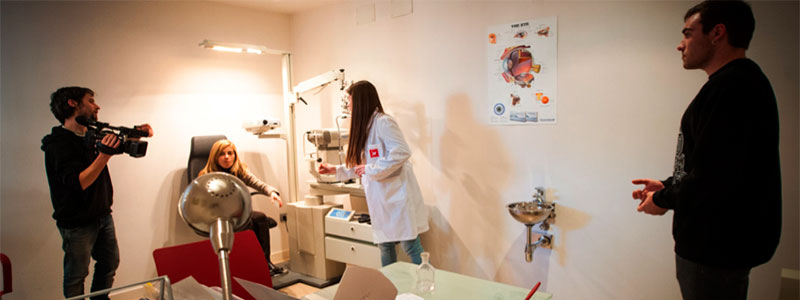
Social inclusion and mental health wellbeing: Potential project
LEER MÁS
SERVICE LEARNING: This is a SL project with the participation of Occupational Therapy students from UVic-UCC.
Potential is a shared project between the UVIC-UCC and the Osonament. Users of Osonament participate in it, together with third-year students of occupational therapy within the methodology of university service learning (ApS-U), within the framework of the subject of occupational therapy in adults. The project has the participation of Alejandro Ruiz, our theater director; Ricard Parra, our audiovisual director; and Jordi Molet, our photographic director.
Social stigma seriously affects the quality of life and occupational participation of survivors of mental illness. It is therefore essential to develop actions for its eradication. It is about demonstrating the true potential of people with mental illness to society, transcending erroneous social prejudices.
Users and students have received training on dramatization, the creation of audiovisual narratives, etc. From the training they have created videos in which they denounce the social stigma. A photographic monitoring of the entire project and a portrait section have been carried out. I must highlight the excellent work done by users of the FCMPPO, as well as by occupational therapy students. Also the project would not have been a success without the participation of our artistic experts.
With all this material we are going to create an exhibition that will soon be available to institutions that want to work against social stigma. The exhibition includes videos made to acknowledge the social stigma, portraits of the students requested by users, as well as audiovisual monitoring of the development of the project.
University Service Learning is an academic methodology that integrates academic learning with community service, in this case the creation of a more inclusive community by seeing the social prejudices and stigma surrounding mental illness.
Example of the videos created (In Catalan)
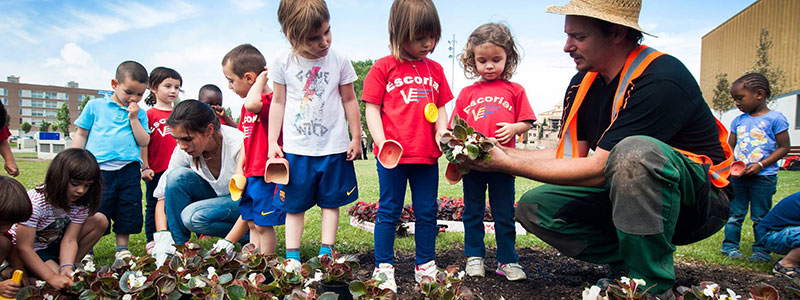
Job and social inclusion of teens, sports and ecology: EcoSPORTech
INTRODUCTION
SERVICE LEARNING: This is a SL project with the participation of Occupational Therapy students from UVic-UCC.
Photo galleries of the project:
UVIC PROJECT WITH VIC CITY COUNCIL RECOGNIZED AS GOOD PRACTICE BY UNESCO GLOBAL UNIVERSITY NETWORK FOR INNOVATION IN 2013.
The university, as an ancient institution and at the same time sensitive to social changes, must be one of the basic props of the knowledge society (Casas, 2005; Simó, 2011). And, above all, in an environment like the current one, which since 2008 has been affected by an economic recession that, in Europe, has endangered the Welfare State and its social achievements and threatens the viability of the economic integration project. On a daily basis, the increase in the eurozone unemployment rate materializes the instability of the markets. In Spain, the total unemployment registered at the time of writing this text (April 2013) exceeded 6 million people. As we have seen in the chapter on work, Bauman (2005a and b) denounces how in this liquid modernity the concept of dis-employment has gone from being a temporary and anomalous situation to a definitive condition for large sectors of the population, unable to adapt to the new economy. For those who have work, this is characterized by a constant increase in precariousness (Beck, 2000) and causes corrosion of character (Sennett, 2006). And here where the university institution appears among the actors who have to promote growth, which should not be oblivious to the serious economic and social situation that European society is going through, and Spanish in particular, it must become a focus in which to promote entrepreneurial spirit. The concept of “social entrepreneurship” appears closely linked to this role of the university committed to economic development and social welfare.
The objective is to present the EcoSPORTech project of the University of Vic (UVic), the purpose of which is to create a social company with young people for sports and leisure activities in the natural environment, integrating new technologies (ICT ). This project has been financed by Obra Social de La Caixa, through its call for projects for labor insertion 2012 (23,000 euros), as well as by the Vic City Council. It also has the support of companies such as Vicreu. At an academic level, this project involves an interdisciplinary collaboration between the Faculties of Business and Communication (FEC), the Health Sciences and Well-being (FCSB) and the Education (FE) and integrates a team of professionals from the fields from occupational therapy, business, marketing, journalism and sports. These teachers have formed the group of young people with whom the company will be created, will direct it and conceptualize and develop the promotion policy. This company is integrated into the incubator of social companies that is being created at UVic.
THE PROJECT
A citizen university, engine of civil society
The University as an institution lives a decisive time. To the aforementioned problems of Platonism and Ethnocentrism, we must add its commercialization. Universities are increasingly pushed to compete for financial resources. The economic crisis has translated into cuts in funding, which have had an impact on the increase in the cost of enrollment, especially at the graduate level, putting the universality of education at risk.
Undoubtedly, universities must create wealth in their territories, and they must be an outstanding engine of the economy, but they cannot lose their original mission as prophets of democracy (Dewey, 1968). Along with education and research, a third pillar of the University is commitment to society, and this commitment must increase with the most vulnerable sectors of it, more in a context where poverty and social exclusion affect sectors every more important of the population. According to Cáritas and the FOESSA Foundation (2012) the poverty rate in Spain is 21.8%. This process coincides with drastic health and social cuts that mean the progressive dismantling of the Welfare State.
In this context, the University must become a laboratory for innovative projects that integrate research in the effort to respond to these pressing social and environmental problems. Society cannot afford the huge human capital that lies in the universities. In this sense, it is essential to combine innovative projects with research, to analyze the impact of our actions, developing an evidence-based praxis, to then be able to transfer this knowledge to society. The aim of EcoSPORTech is to recover the role of the university as the engine of civil society, in the spirit of John Dewey (1968) who impelled us to develop intelligent action in society, for which we must train our students in the skills necessary to understand the complex contemporary problems, but also to train them with the skills to transform it, to create a society that is more just and supportive as well as competitive. Many times the University has been accused of being an ivory tower (Simó, 2010) alien to its reality, a consequence of its Platonic heritage.
It is necessary to develop teaching praxis in which students come into contact with a contemporary reality characterized by complexity in order to acquire the necessary professional skills. In the PBL (ENOTHE, 2004) students integrate the theoretical knowledge seen in the classroom by applying it directly to a specific reality, in this case the formation of a social company for the labor integration of young people in a situation of social exclusion. It is noteworthy that they do it from an interdisciplinary work, overcoming ethnocentrism, the fight that is established between the different disciplines and that afflicts the university on so many occasions. Our own research has shown the potential of this reality-based learning praxis (Simó, 2008). It becomes stronger and more meaningful, if it is combined with Service Learning (Puig et. Al., 2006), where the student not only integrates academic knowledge and develops competencies, but also does so while providing a service to his community, in this case one of its vulnerable groups, young people in a situation of labor exclusion, although the project benefits the community of the city of Vic in general.
Social entrepreneurship (ES) and the solidarity economy
A social entrepreneur is a person who creates an innovative company with a powerful new idea that combines a visionary spirit and creativity to solve real-world problems, with a strong ethical content and fully guided by his vision for change (Abu-Saifan , 2012). Without a doubt one of the main tasks in this 21st century is helping people to get and keep meaningful, non-aligned work.
Therefore, in a context marked by unemployment and precariousness, it is essential that you actively participate in the creation of jobs based on significant occupations. One possibility is the development of an eco-social therapy, where social insertion is integrated with environmental rehabilitation. The EcoSPORTech project follows the basic postulates of ecosocial therapy, working to create healthy, inclusive and sustainable communities.
The occupational ecology is articulated in the labor insertion of the young people at the same time that a work of landscaping and recovery of green spaces of the riverside forest is carried out, to promote sport and leisure in the natural environment. The impact of the project goes beyond the social integration of young people, since it adds:
– the economic promotion of the city, promoting family and sports tourism.
– the creation of a healthier city, by promoting sports in the natural environment by creating circuits for physical exercise.
– the integration of the spaces of culture and nature, since the gardens of the Cloister of the Cathedral and the Center for Performing Arts are integrated with the green rings (riverside forest).
– the recovery of green spaces, with the creation of new gardens in the city, and the recovery of the riverside forest with respect to sustainability criteria.
– Citizen participation, since various city associations participate in the project, from children, young people to the elderly.
The Ecosportech project
Currently our society is closed to young people at work level. This puts them at risk of marginality and lack of meaning, as they cannot project their lives in the future. Frankl (1964) stated that this nonsense situation led to addiction, aggression or depression (or suicide), precisely problems that seriously affect young people. It is therefore essential to develop initiatives that allow you access to the world of work and to develop your life project. As Sen (2000) reminds us, we can understand poverty as the inability to control our own lives.
EcoSPORTech was born from the fusion of three significant realities for young people, such as sports, nature and Information and Communication Technologies (ICT). From these centers of interest, it was thought to create a cooperative specialized in developing sports and leisure activities in the natural environment, integrating ICT.
It is important to recover this cooperative spirit in a framework characterized by social competition, because we live in a process of individualization (Beck and Beck, 2003) and social atomism. The first phase of the project has consisted of training within the UVic of the youth group on issues related to sports, social entrepreneurship, health, new technologies and the development of sustainable practices in the natural environment.
This training has lasted one month. It has been developed at UVic (in classrooms, on a television set, etc.), as at Creacció, the UVic Social Entrepreneurship space. After the training, a field work has been carried out for two months, in which the participants have received a salary scholarship. The first action was carried out in Vic, coordinated with the Vic City Council, within the framework of a more ambitious project, Vic: landscapes with a soul. Specifically, two gardens have been created within the city; the Cloister garden (in the Cathedral of Vic) and the Garden of the Arts (opposite the Atlántida Performing Arts Center). These are two of the most important spaces in the city, taking place in the two cultural icons of the city, the Cathedral and the Center for Performing Arts.
The cloister garden has been recovered in the cathedral. The intervention has been divided into two different areas, the outer courtyard and the cloister itself. In the outer courtyard, old metal bars have been recovered and incorporated into the garden design, as they support climbing roses. Abelias, rosemary and lavender have also been planted. The structure of the patio is marked by three cypresses and an olive tree. Likewise, river stone has been laid and the automatic irrigation system has been created. In the cloister, weeds have been removed, trees and shrubs have been pruned, geotextiles have been installed in the midlands, hydrangeas and seasonal plants have been planted in them and they have been covered with pine bark. The intervention has been completed with painting work and the installation of adequate lighting.
Twelve cercis have been planted in the garden of the arts, a tree that symbolizes roads and love. Likewise, more than 300 rose bushes surrounded by rosemary and 600 lavenders have been planted creating a wave. This wave is topped by a ginkgo biloba as a ship’s mast. The ginkgo is a thousand-year-old tree, it is a symbol of resistance since in Hiroshima they flourished the spring after the explosion of the atomic bomb. A seasonal plant has also been planted, specifically begonias, with which the symbol of peace has been drawn and the symbol of the performing arts center (A) has been created. It is noteworthy that the planting has been done with more than 100 children from the El Escorial school. It has also created a sports circuit in its riverside forest, for which 60 lime trees were planted and the road has been recovered.
On the one hand, it seeks to promote healthy leisure, linked to the natural environment and physical exercise, while creating affordable leisure alternatives for all citizens, as we cannot forget the impact of the crisis on the leisure habits that were coming developing so far, linked to consumption patterns. The project involves the recovery of the cultural and historical heritage, by recovering the leisure spaces that citizens used at the beginning of the last century. The project continues with the creation of new gardens, such as the Philosophical Garden. at the end a garden is created that goes from the Romanesque bridge to the Bruguer Bridge, which implies a garden of 5 linear kilometers. The cooperative being created may organize leisure and sport activities in the natural environment, at the request of public or private institutions, or organized by itself, to seek its economic sustainability. For this reason, a fundamental aspect is the collaboration with the DIEDRE association, specialized in the creation of national and international tests of sport in nature.
The beneficiaries of the project are not only in youth groups, but the entire community. The project will benefit the citizens of Vic who will be able to enjoy the circuits created from EcoSPORTech. In particular, attention is paid to facilitating the practice of sports for people with a disease, in collaboration with the Primary Care Centers. Another group that has already participated is that of children, since more than 100 children 3-4 years old participated in the creation of the Garden of the Arts. Thus, the project emerges as a coordinated synergy from the UVic, in direct collaboration with the public sector (Vic City Council), civil society (Escorial College, Health Centers) and business (Obra Social La Caixa, Vicreu).
CONCLUSIONS
As Bohm (2001) taught us, the problem is that we tend to be repetitive when we really need to be creative. Our contemporary society faces a series of serious social problems, among which unemployment and job insecurity stand out. Universities must contribute from research and technological and social innovation to respond to these challenges, to create a more competitive society, but at the same time, fairer and that does not forget the principles of sustainability. In doing so, it will become the engine of civil society, as an outstanding institution between the State and the market (Barber, 2000), educating students capable of developing intelligent action on reality, in the sense of Dewey (1968), aware of their responsibility as committed citizens on a planet with a common destiny, since the problems to which they must respond, such as climate change, are global.
Solidarity is not a possibility, it is a necessity, because as Kant (1946) already predicted in the 17th century, the inhabitants of a spherical planet are obliged to collaborate. In fact, as Bauman (2004) reminds us, the ethical imperative coincides with the survival imperative. It is time to rethink the university institution in light of serious contemporary problems, time to regain its founding mission as a prophet of democracy, time for innovation and creativity, time for the creation of wealth that is distributed with criteria of justice Social.
It is time for an enterprising and committed University, which in the case of UVic has materialized, among other projects, with that of EcoSPORTech: on the one hand, creativity and the capacity for innovation are encouraged among professionals of the future, as well as interdisciplinary collaboration between them; on the other hand, the culture of social commitment is fostered and a school of citizenship becomes. EcoSPORTech is an example of occupational ecology, the purpose of which is to create a healthy, inclusive and sustainable community. Eco-social therapy allows the development of comprehensive interventions, from a vision of ecology that integrates the whole with the whole.
On the one hand, seven young people in a situation of exclusion are trained and a cooperative is created to give continuity to the project, from the social economy. The city goes from having a series of disconnected green spaces to a linear garden of 5 linear kilometers. This garden integrates culture (the Cathedral and the Performing Arts Center), with nature, by connecting the city with the Ribera forest, which in turn becomes a cultural space, being a space where interventions will take place from Land-Art.
A health space is created, by creating physical exercise circuits for the community. It does so by promoting citizen participation, from children to adults, from an inter-generational project. Because as Arendt (2005) says well, human action is our ability to create miracles.
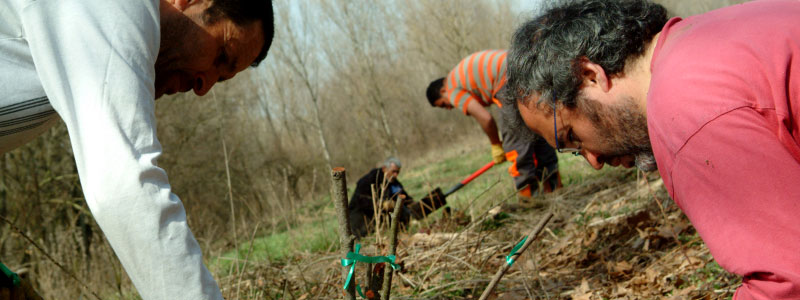
Job inclusion, ecology and wellbeing: SHES project
INTRODUCTION
HUMAN, ECOLOGICAL AND SOCIAL SUSTAINABILITY stems from commitment to people, emphasizing those who live in a situation of social exclusion; with the environment and with society. Today’s society is based on the values of competitiveness and promotes the breakdown of community ties, social atomism and loneliness.
As Sennett (2006) says well, we must retrieve the pronoun us-others. From an eco-social therapy (Simó Algado 2011, 2012) we want to help create a healthy, inclusive and sustainable community, understood as that human group that recognizes itself as interdependent and in which everyone feels and participates as a full-fledged citizen, Despite any occupational problem, it develops in harmony with the natural environment, ensuring the present needs without compromising those of future generations to satisfy their own. A fairer society that takes care of ecology and the right of new generations to a sustainable world.
GOALS
The main objectives of SHES are: Given the perpetual labor exclusion of large sectors of the population (Bauman, 2005), the aim is to develop socio-labor integration projects with people in situations of social exclusion due to illness, addictions, gender, ethnicity, immigration and / or poverty, which have a direct impact on the environment. Achieve social inclusion through the creation of standardized jobs as a guarantee of a decent and autonomous life project. Poverty implies the inability to control our lives (Sen, 2000).
Not having a job puts the person in the role of assisted (Paugan, 2007) and prevents him from contributing to the social and economic fabric of his community. Promote social cohesion and move towards a more inclusive and sustainable society based on Human Rights (Guajardo, 2012) through projects that increase participation and active citizenship. Active citizenship is key in the fight against poverty (Green, 2008). Faced with social atomism and the process of individualization (Beck, 2003) favored by neocapitalism, we must recover the culture of the common good (Bourdieu, 1999).
To develop transdisciplinary interventions, integrating the praxis / research binomial, and develop a network of synergies (partnership) at the national and international level. It is vital to assess the impact of the interventions. As Mounier (2002) said, we must combine the action-reflection cycles that he compared with the systole and diastole cycles of the human heart. Promote interculturality and respect for diversity. The project involves a meeting of cultures. It is essential to value the concept of difference and educate in tolerance.
The crisis exacerbates the combat between myxophilia and myxophobia (Bauman, 2006), with foreigners being targets of xenophobic and intolerant attitudes. The education of society on the potential of excluded people, reducing stigmas and prejudices so prevalent and that many times they are more disabling than the disease itself. We must stop blaming the victims, generating equal opportunities at the educational and labor levels, so that the criterion of justice is met. Given the proliferation of job insecurity (Beck, 2000) and aware that work is a determinant of health (CSDH, 2008), we aim to develop occupations that are significant and have an impact on the health of people and their mental well-being (WHO1946, WHO 2001), its social inclusion and the ecological well-being of communities from an occupational ecology.
INTERVENTIONS
The SHES project develops a holistic vision of ecology, understood as the relationship between everything and everything (Boff, 2000). Therefore, at the same time that it addresses environmental problems, it faces poverty. It does so by articulating the principle of responsibility (Jonas, 1995) against the natural environment, in an attempt to preserve the ecosphere so that future generations have a place to live.
The first SHES intervention took place within the framework of the European project RECOVER (2011-2012), whose purpose has been the recovery of the forest on the Mediterranean shore. The project has worked with the Center for the Study of Mediterranean Rivers and the Forest Council of Catalonia. The project has involved the rehabilitation of five natural spaces of high ecological value located in the Osona region (Barcelona). The tasks have consisted of:
- Elimination of invasive species
- Reforestation with native plant
- Creation of fences to separate livestock areas from protected areas
- Protection of bird breeding area
The following project has been carried out for the Girona Provincial Council, it has been developed in the Montseny Natural Park. It has been developed from 2012 to 2013. This has required the submission of SHES to calls for public administration contracts. The tasks have consisted of:
- Reforestation with native plant
- Recovery from natural sources
- Forest clearing
The profile of the participants in the SHES project is of people in a situation of social exclusion, but it is important to highlight that they are people capable of developing a first-class professional work, since the operation is by contracts that, although they come in many cases from Public administration, implies the achievement of objectives within certain deadlines. A fundamental aspect is the training of the team, since forestry work is specialized and involves the management of diverse machinery such as brushcutters and chainsaws, which involve expertise and comply with safety regulations. The work brigade follows the instructions of forest engineers and biologists, following exacting ecological criteria.
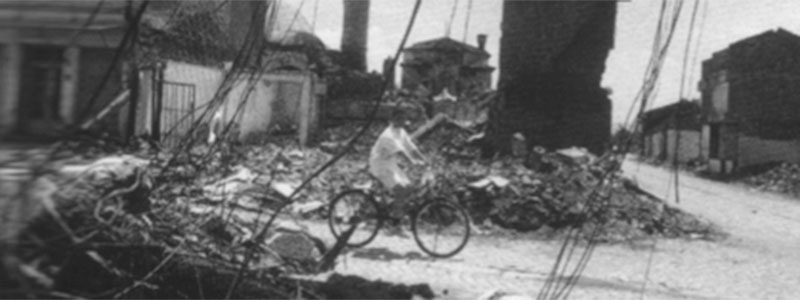
International cooperation: Children survivors of war
ABSTRACT
See article: Occupational therapy with children survivors of war
Key words: war, mental health, spirituality, prevention of the psychological effects of trauma, community occupational therapy.
Summary: This text presents a preventive Occupational Therapy project carried out with children survivors of the Kosovo conflict. The objective of the program was to help children express traumatic experiences lived through the war, to prevent the development of psychological problems and possible future occupational dysfunction. The intervention was based on a community-centered approach with spirituality as the central part of the intervention.
The Human Occupation Model and the Canadian Model of the Occupational Execution Process were used to identify the problems of occupational achievement and their resolution.
The return of children from a land of war to a land of childhood demonstrates the possibilities of Occupational Therapy in this field. The current situation of humanity is a challenge for everyone. We urge occupational therapists to get involved in the fight for occupational justice and work to eradicate occupational apartheid.
“No man is an island, no one is completely alone, each man is a piece of a continent, a part of a whole, if a piece of land is destroyed by the sea, it doesn’t matter what happens in Europe, at your friend’s house or in your own home.
The death of every human being dwarfs us, because we are integral parts of humanity. So don’t wonder who the bell tolls for, the bell tolls for you. ”
John Donne (1572-1631) Devotions on Emerging Occasions.
INTRODUCTION
“War is the saddest word I can pronounce. It is the bird of evil that never rests. It is the bird of death that destroys houses and steals our childhood. War is the bird of evil, which turns the world into hell. ” (Maida, 12 years old) (UNICEF, 1993)
There are no words to describe the mental and emotional state of people, especially children, that follows the tragedy of war. Especially for those children who remained in the city during the war, which has left them traumatic experiences that they cannot forget having witnessed the atrocities, directly living the violence and fear due to the constant threat of death.
Prevention, as opposed to treatment, has been the focus of discussion in Occupational Therapy for a long time. As early as 1973, West emphasized the need to develop preventive Occupational Therapy programs for children in community psychosocial projects. It is a well-known fact that prevention measures that seek to identify risk factors and promote well-being are more effective than treatment measures (West, 1973). We believe that prevention-based occupational therapy interventions are critically important to children who have experienced the war.
The capacities of occupational therapists to innovate and enhance the strengths of communities are valuable tools in contexts where there is a shortage of economic resources, in disadvantaged cultural and social environments. For example, Wilcock (1998) encourages occupational therapists to expand their roles to include promoting health and well-being with everyone, especially those living in adverse political and social conditions. Kronenberg (1999) introduced the concept of occupational apartheid, referring to chronic (established) environmental conditions that deny marginalized populations (at the individual, community and social levels) access to the significant occupations to which they are entitled, which puts your health and well-being at risk. Health and well-being are spoken of as a fundamental human right to access meaningful occupations.
The role of OT is to empower community members to recognize their own potential through meaningful occupations, working towards occupational justice.
We describe a preventive mental health occupational therapy program with children who have suffered traumatic experiences from the Kosovo war. The program focuses on secondary prevention, which aims to prevent further development of trauma until it becomes chronic and aggravated, with its consequent occupational dysfunction.
The program had two main objectives:
- To contribute to the prevention of long-term psychological consequences such as post-traumatic anxiety, depression, personality disorders, which can develop as a consequence of the non-expression of trauma experienced during war.
- To detect and refer children who already have more severe trauma.
The project lasted 6 months, was designed and developed by the first two authors, and was continued by a Canadian Occupational Therapist, Stephen Johns, and a Clinical Defectologist, Lulezim Arapi, a member of the Albanian community. The project was developed in collaboration with Médicos sin Fronteras (Spain) and Payasos sin Fronteras, a non-governmental organization based in Spain whose objective is to put smiles on children’s faces.
THE CONTEXT: GJAKOVA
“This story tells that even the sun and the clouds are crying for the destruction of Kosovo, bathed in blood” (Besart 11 years old)
Gjakova was born in fertile land around her mosque, built in the 14th century. It is a medium-sized city of about 60,000 people located in southwestern Kosovo. Before the war, 90% of the inhabitants were of Albanian origin and 10% Serb. After the conflict, Serbian soldiers returned to their country, leaving Gjakova in the hands of the Albanian community. 20% of the city was partially destroyed, 40% completely. Gjakova was a priority target during ethnic cleansing.
Milosevitz’s coming to power marked the beginning of 10 years of Serbian oppression. During the 10 years preceding the conflict, Kosovo was completely dominated by Serbs. Albanian culture, social expression and political participation were totally suppressed by the Serbian government. During the past 10 years, the people of Gjakova suffered continuous episodes of oppression, which involved an accumulation of traumatic experiences. When the North Atlantic Treaty Organization (NATO) began its military campaign in 1999, 3 months of extreme adversity began for the population of Gjakova. Jeta, a 12-year-old girl expressed it saying: “The robberies, evacuations, massacres, torture were our daily bread.”
While many Albanians escaped to the refugee camps in Albania, Macedonia and other countries, it is important to consider that 60% of the population did not leave Gjakova. For months these people remained hidden in their cellars.
It has been documented that the important factors to understand the trauma are the distance to the trauma, its frequency and duration (Agger, 1994). Therefore, we can understand the level of trauma existing in the Gjakova community. For 10 years the population lived under constant violation of their human rights. The final three months were the crudest, in frequency, daily, and intensity. They suffered massacres, rapes, fires and bombings. Virtually the entire population suffered or witnessed atrocities, committed against members of their family.
Effective programming implies understanding both the past and present conditions that influence the psychological state and consequently the issues related to the occupational performance of the community. In addition to past traumatic experiences related to war, new sources of trauma continually appear in the lives of the inhabitants of Gjakova. The main new source of trauma is the situation of prisoners. More than 1,600 missing young men and women, allegedly prisoners in Serbian prisons. During the 6 months following the war there has been no news of his whereabouts. Every day, new mass graves appeared, destroying family members’ hopes of finding loved ones alive.
“… Now that we have freedom we should be happy like the rest of the people, but this does not happen because in my city Gjakova the Serbs captured 1600 prisoners while fleeing. This concerns us greatly. We await your release ”(ELZA, 13yrs)
The harsh winter, the lack of adequate housing and accommodation, and poverty are other sources of trauma. It is estimated that 70% of the population is unemployed; the teachers we were working with received their last salary 10 months before the war started. The mines are eternal sentinels, which kill and disable children.
“I drew a burning house and flowers, there are mines underneath, so we have to be careful when playing.” (Arjona 8 years old)
Finally, the most pertinent reason for new trauma is the current political situation. The Albanian population believed that it had finally gained its independence, and that all Serbs will return to Serbia. For the Albanians, this belief gave meaning to their suffering.
“Our hands wait for freedom, but you cannot win freedom without blood” (Gembiana 11 years old.)
But the reality was very different. Kosovo continued to be politically unstable with incidents between NATO soldiers and groups belonging to the former Kosovo Liberation Army, and with violations of the peace agreements committed by Serbian soldiers.
WAR AND CHILDHOOD
In the last 50 years there have been more than 400 armed conflicts, 150 of them we can consider serious. From 1945 to 1995, 25 million people have died, of whom 17 million were civilians. 90% of the weapons used are produced by industrialized countries (Monestier, 1999).
Children have become an integral part of the conflict. They are lost, separated from their families, abandoned, orphaned, tortured, mutilated, sexually abused, kidnapped, starving, forced to become soldiers, forced to kill, or to live by thousands in refugee camps, in the company of memories. traumatic. One out of every two victims of recent conflicts is a child. Sometimes children are chosen as targets to undermine the enemy’s morale, or kill potential enemies in the future. Some mines are specially designed to harm children. Sexual abuse is a particular threat to girls. The girls are forced to have a child from the enemy. Rape causes continuous mental torture during pregnancy and when the child is born. The consequences of the war, famine and the disappearance of medical services, cause 20 times more victims than the war itself. UNICEF confirms that between 35,000 and 40,000 children die every day due to the non-satisfaction of their basic needs. (Monestier, 1999).
CHILD AND TRAUMA
Although the origin of the war is based on political reasons initiated and directed by adults, the consequences of war trauma are harder for children. All of these events can trigger psychological consequences and psychosomatic trauma such as post-traumatic anxiety (Monestier 1999) .In 1990, 12 million children displaced by war were considered to have different levels of psychological trauma.
Fraenkel and Tallant (1987) state that children who have suffered trauma “harbor intense feelings of fear, pain and insecurity, which, when repressed, often trigger behavioral disorders. (p. 59) ”. When traumatic memories are not expressed they may later manifest as depression-type psychological disorders, personality disorders, post-traumatic anxiety, and behavioral problems (Driven and Belran 1998; Gravilovicc, Lecic, Tosevski, and Jovic, 1998; Hubbard, 1998, Monestier, 1999, Valent, 1995). These adaptive disorders can manifest themselves in physical aggression against their peers and, fear, sleep problems, isolation, anxiety, fear and silence. They lose their interest in gaming experiences, and tend to repress even the most elementary feelings like love for their own parents.
Gavrilovic and his collaborators (1998) affirm that childhood trauma is a risk factor that predisposes the individual to develop mental health problems. Similarly, Valent (1998) studied the testimonies of holocaustro survivors in detail and found that traumatic responses had more complex manifestations than post-traumatic anxiety, which may affect the trauma survivor’s personality, morality, and existential meanings. Finally Driver and Beltran (1998) affirm that children with trauma due to war and displacement manifested a low performance in school, problems in their social relationships, and difficulties with their gross motor skills in activities such as sports. Whatever the level of psychological trauma, it is clear that traumatic experiences have a debilitating effect and consequences on the occupational achievement of children for the rest of their lives. Therefore early intervention is essential to prevent trauma from triggering a complex problem in adult life.
THE IMPACT OF WAR IN CHILD SPIRITUALITY
Unruh (1997) suggested that by examining the writings of people who are deeply involved in their occupations we discover that spirituality can be expressed through engaging in occupations with personal meaning in our lives. Occupations related to art, nature, and religion can facilitate spiritual expression.
In a war situation, all these dimensions of spirituality are affected. Needless to say, war affects the essence, the soul of children. Children can experience life as meaningless. What is the meaning of suffering? What is life? What is man? It is extremely hard for children to understand the reality they face, to connect with their own feelings, when they suffer emotional problems, when all their values are in crisis. War confronts children with the dark side of life. Human values such as love, friendship or solidarity can seem like a mere illusion, and can be replaced by revenge, hatred and violence.
“I tried to reflect Serbs without spirit in this drawing. I don’t think anyone in the world can survive after seeing how criminal they are: headless children, they killed babies in their mothers’ womb, and they forced their sister to drink their blood. Killing parents next to boys, raping girls in front of parents, are not human. This massacre was terrible. The Serbs took my aunt’s children and now we don’t know anything about them. The hatred in our hearts was very great. There are no Serbs because I have too many bad words to say to them ”(Orjeta 13 years old.)
The basic human need to connect with others is also in jeopardy. They may have lost the most significant people, including close friends and family.
“Classes have started at my school. Your empty desk is looking for you. We cover it with flowers. We cover it with tears ”. (Dielleza, 11 years old).
“I must leave you father without saying goodbye to you, with tears in my eyes and pain in my heart. I walk through a path of sadness ”. (Gjilizare Morina).
Children with emotional problems can be isolated in their own communities, branded as crazy. The community network may have broken, including its traditions, rituals, and ceremonies. The child may have lost his feeling of belonging, of feeling part of a community.
Under war conditions, an example of occupational apartheid, children do not have access to meaningful occupations. For example, some children in Gjakova remained hidden for three months in the cellars. Their most important occupations were modified because of the war, the games became war games. The mosque was severely damaged during the war period. Children did not have access to artistic expression, nature, due to the fighting that was taking place and the presence of mines.
PHYLOSOPHICAL AND THEORETICAL PRINCIPLES
The intervention was based on a set of principles, including a community-centered intervention, cross-cultural and holistic occupational therapy, and meaningful occupation as the soul of the intervention. The community centered approach (Algado) was developed. We base this term on the term client-centered approach (Canadian Association for Occupational Therapy, CAOT, 1997), and applied to communities. A community-centered approach is a belief in the internal potential that communities have in themselves, based on the humanistic philosophy of the profession. The occupational therapist becomes a transmitter of knowledge, while the main resources are in the community. We walk with the communities, not for the communities. They are the main protagonist in the story of their lives.
The focus of the program was at the community level Members of the Albanian local community were empowered to become self-sufficient and independent child mental health promoters. They were known as Mental Health Promoters. A complementary treatment program was developed, the special children’s space, where the most traumatized children were referred for individual treatment with a clinical defectologist.
Cross-cultural occupational therapy goes beyond recognizing the beauty of all cultures, to introducing culturally meaningful occupations into intervention. Activities reflect the values, and traditions of the culture, to make occupations meaningful. For example, children worked with their own teachers, sang Kosovar songs, recited poems, and played traditional games.
Holistic occupational therapy means taking into account the physical, psychological, social dimensions and especially the spiritual dimension of the human being. Our previous experiences with Bosnian and Mayan refugees (Algado et al, 1997) and with homeless adults with mental health problems have taught us that the spiritual dimension is the most important. Meaningful occupation is the soul of intervention.
The Human Occupation Model (Kielhofner, 1995) and the Canadian Model of the Occupational Execution Process (CMOP), (CAOT, 1997) formed the theoretical basis of the intervention. The following theoretical approaches were incorporated to identify occupational areas and plan interventions. In Model of Human Occupation it has been used by the first author in previous interventions, with the Mayan Indigenous refugees in Guatemala (Algado, Gregori & Egan, 1997), with Bosnian refugees, with prisoners and immigrants in Spain, and with the children of the street in Mexico (Kronenberg, 1999). The seven phases of the CMOP were used as a frame of reference that guided the design and development of the project.
Mattingly’s research-based theory of narratives (cited in Hasselkus and Rosa, 1997) suggests that individuals make sense of their lives through stories and written narratives based on their experiences. Narratives are used in therapy to help provide the individual with a perspective on their life. Narratives give people a context to rediscover meaning and define their lives in order to make sense of their experiences. Individuals who have suffered trauma benefit from the expression of trauma in a process of normalization (Ainscough, 1998; Fraenkel & Tallant, 1987; Reekmans and Keilhofner, 1998). This process allows denied feelings and emotions to surface, allowing the person facing them to face them on a cognitive level, express them and find meaning in their sufferings.
Children’s cognitive development is limited to concrete thoughts. Children are not able to see abstract things, so understanding and expressing concepts like feelings of fear, anxiety, anger or despair are difficult for children to understand and talk about. Direct expression and confronting such feelings is difficult or practically impossible. Instead, indirect expression methods can be used to help children express their feelings and emotions. Expressive activities such as art, ceramics, and narratives serve as a secondary medium through which children can express their thoughts, emotions, feelings, and desires. For example, a child who cannot describe the fear experienced by having witnessed a massacre, can draw a picture of what he or she saw and express their fear through it. Drawing can later be used as a vehicle for verbal communication and exploration of the feelings and meanings associated with drawing and those experienced during its creation (Ainscough 1998). Visual images and concrete objects provide a means for children to project their emotions, and thus to discuss and process them externally.
Play is the most essential and significant occupation for children, and their own language. The game (Morrison, Metzger and Pratt, 1996) was used in the design of the workshops. Therapeutic activities based on the aforementioned theoretical principles were converted into various kinds of play activities to achieve the objectives of the intervention. The goal of using play in the intervention was to provide support, promote insight, and facilitate emotional catharsis, have positive experiences, and be successful in activities.
THE PROGRAM
The objective of the program was to serve primary school children (6 to 14 years old) in the city of Gjakova. The purpose was to select and train members of the local community so that they could develop occupational therapy workshops with the children.
The role of the mental health promoters was:
• Conduct occupational therapy workshops using expressive techniques to facilitate the emotional expression of traumatic experiences on a preventive level.
• Detect children who present a specific or complex symptomatology to refer them to specialists.
Primary and secondary education teachers were selected as candidates to be mental health promoters for several reasons:
1. They had regular contact with a large number of children, as the schools were in operation, which facilitated contact with a large number of children.
2. Teachers were known to children and already have an established relationship based on trust, making it easier to establish a powerful therapeutic alliance.
3. The teachers were trained to communicate and work with the children.
4. Teachers had a natural affiliation with children and were highly motivated to work with children.
The program consisted of three phases:
1. Theoretical training.
2. Practical training.
3. Additional training on specific topics.
After the three phases it was foreseen that the mental health promoters could develop the occupational therapy workshops with minimal supervision.
1. Theoretical training:
The objective of these sessions was to provide teachers with knowledge about the basic concepts of mental health (see table 1). In this section, the first two authors developed the training. 12 sessions were held with the teachers, lasting 2 hours. The first hour was didactic, devoted to theory, the second was a practical session, which included learning to use the activity for therapeutic purposes. The practical sessions involved experimentation with various displacement techniques (see Table 2) so that teachers could then apply them to their students.
Since all teachers also suffered trauma from war experiences, it was essential to work with teachers’ mental health needs during training.
2. Practical training:
After the two weeks of theoretical training, the teachers were already prepared to develop occupational therapy workshops with the children, with the supervision of the first two authors. The objective of the practical training was that the teachers could develop the occupational therapy workshops independently.
The workshops were held three times a week, for two hours each. Each session consisted of two parts: (1) fun activities like sports, games, songs, and (2) movement techniques for emotional expression. Complementing the displacement activities with playful activities provided the children with pleasant experiences that motivated them to return to the sessions. Finding a balance between supporting children and facilitating emotional expression is essential. It is important to consider that play activities, based on game theory (Morrison, et al., 1996) were also considered therapeutic and were not considered apart from the therapeutic process. Playful activities helped children channel negative emotions constructively. For example, emotions such as anger or aggressiveness that had been discussed during the session could be channeled into sports such as soccer after the session. Playful activities were the best opportunity to observe children’s spontaneous behavior by providing authors and mental health promoters with important information about children’s behavior. Observing the play behavior allowed us to identify the children who needed individual attention.
The sessions consisted of a specific displacement technique in each session (see table 2: list of projective techniques). Children were not given the choice of activities for two reasons. First, the teachers worked with large groups of children, 25-30 each, and in each session there were a minimum of 3-4 groups. Second, the authors had to supply the materials for the activities. Therefore, it was not possible to carry more than one type of materials at a time.
Each session followed a structured process. Sessions began with games indoors or outdoors before the main activity. So the children would engage in an activity like painting based on a free theme. The children gave a title or theme to their creation, and a description of what they had created, why they had chosen it and how they had felt while creating it. Finally, the teachers gave the children the opportunity to share their creations with the rest of the class, and so they began to talk about different topics. The sessions usually ended with songs or sports activities.
The initial sessions focused on helping children identify different feelings, and make them aware of the importance of their expression. They were asked questions such as what is a feeling? Have you seen any What colors do you have?. We have to remember that feelings are an abstract entity for children. So the first step was to teach children to know what feelings are and to be able to nominate them. Initial games often included games that identified different emotions. A typical game we played was a type of characterization where the teacher wrote actions and emotions on a piece of paper for the children to represent them. Each child then chose a role and acted according to what was written on the paper while the rest of the group tried to guess the correct emotion. This exercise allowed visualizing and naming the emotions to practice them verbally, identifying the emotions they were observing. This later served to associate and verbalize images expressed in their drawings with the emotions they had experienced. Puppets and stuffed animals were used to help children visualize different feelings. For example, a clown puppet to identify joy, a demon puppet to identify hate, a witch to identify fear.
Successful sessions focused on teaching children to help them understand why sharing feelings is so important and facilitating discussions of complex emotions. The use of puppets was again crucial for this purpose. We create stories with the puppets, for example, if the devil is in the child’s heart, and the clown comes and knocks on the heart’s door, what will happen? Would the demon let the clown in? These stories were a way to start discussions with the children. Children were allowed to try to resolve conflicts themselves. Initially, they resolved the situation by expelling the demon from the heart. Then it was time to discuss with children about different ways to channel complicated feelings like sadness, hatred, or anger. In discussions we concentrated on making links between the feelings and emotions identified in the pictures or the puppets with personal feelings and personal experiences.
During the session, it was repeatedly and in different ways emphasized that the children displayed a normal reaction to an extreme situation. For example, if a child expressed that they had lost their cousin, a discussion was facilitated with the rest of the class about death, and the rest of the class was asked if anyone else had also lost a family member. Through normalizing the experiences children expressed and manifesting the similarities between individual experiences, each child felt with certainty that he or she was not the only one with feelings of sadness, fear, or loss.
It was interesting to see the reaction of the less traumatized children as they understood their peers and began to actively support them. It often happens that children who do not understand the traumatic feelings of their peers can label them as crazy. Therefore, it was essential not to stigmatize or isolate children with deeper feelings of trauma from the rest of the group. Instead, we chose to generalize the experiences and normalize them so that these children with more traumatic experiences did not feel isolated, while the children who had experienced less trauma became aware of the experiences lived by their peers and showed empathy towards them.
3. Extra training:
Artists from the NGO “Clowns without Borders” and the first author developed additional training workshops. Four different groups of artists with different talents participated in this phase of the program. The role of the artists was to transfer techniques and skills in which they were specialized. The role of the occupational therapist in the extra training was to discuss with the teachers the development of the training sessions and to incorporate the activities seen in the training into the sessions with the children, which were based on therapeutic objectives. The four groups of artists developed the following workshops:
- Tai Chi
- Body expression
- Games
- Breathing and warm-up exercises.
In addition to the workshops, the artists performed for all the children in the program and for the Gjakova community.
In this way, the teachers completed a training of more than 72 hours in the course of the three months. In all, 65 primary school teachers, 5 secondary school teachers, and 30 medical students participated in the training. More than 500 children participated in the program at the five schools. The degree of supervision gradually decreased throughout the sessions. Teachers are now expected to be able to bring in new groups of children more independently. The program was taken over by another occupational therapist, Steve Johns, and continued for another three months.
Children’s experiences: reactions, narratives, stories
The use of play and expressive occupational workshops demonstrate the power of meaningful occupation to assist children in the expression and processing of traumatic emotions. The primary reaction of the youngest children was the need to express images of objects present in their visual memory such as burning houses, tanks, soldiers … Immediately when they were given the materials, papers, paints and colored pencils, the children They began to draw pictures of burning houses, tanks, corpses and scorched earth. They were mainly images of events they had witnessed.
For example, the day after an eclipse, children drew pictures of it. As the tension between the Serbs and the Albanians increased in the city of Mitrovitza, this also appeared in the drawings the following day. The process of communicating deeper feelings and emotions occurred when talking about the pictures, and about the activities with the puppets and stuffed animals.
Older children (12-14 years old) expressed what they had seen in a more symbolic way through images that represented thoughts, feelings, people and identities. For example, while the younger children painted uniformed men carrying weapons to represent Serbian soldiers, the older children drew a cross with the four “cs”, a symbol representing Serbs. Similarly, during the puppet workshops, the youngest represented conflicts between Albanians and Serbs in general. However, older children created complicated stories talking about Milosevitz, Clinton, Rugoba, Albright etc. The older children wrote deep narratives and poems to express their feelings.
The children’s evolution in their drawings, performances, and free play ranged from darker themes to more positive thoughts. At the beginning all the drawings focused on the theme of war. Towards the end of the program new themes appeared like spring. Additional fragments of the sessions can be found in Table 3.
The cultural aspect was included in the intervention in the form of Kosovar poems and songs that were used to start the sessions. The children expressed themselves with great passion when they sang their songs and recited their poems. All the songs were about the massacres that happened in their beloved Kosovo. This was a socialized way of expressing her pain. Occupational workshops allowed children the opportunity to come together and form an informal support group where they were able to express their pain and feelings.
It is important to recognize that occupational activities were essential to express war experiences and work to prevent the future consequences of childhood trauma. In any case, other factors such as community and family support, natural capacities to cope with trauma, access to health services, and education also played an important role in promoting the psychological well-being of children after war.
CHILD SPIRITUALITY
Through engaging in occupations, children were able to search for and find meaning in their experiences, and to give new meaning to their daily lives. This occurred spontaneously, not suggested by the workshop leaders, which manifests the spiritual dimension of the children. The struggle to make sense of the massacres was a recurring theme in the drawings. They associated the meaning of the freedom of their beloved Kosovo, the suffering of all the people who gave them their country, through the sacrifice of their loved ones others survived.
“We can see how much love our freedom was paid, but when we imagine that now we can breathe freely, we can confront it, because the dead bodies are now angels of peace”
The children were able to listen and be heard, connect with their own feelings, such as sadness. fear, happiness). In the sessions, human values such as solidarity or love were recovered. Special attention was paid at work with feelings of hatred and revenge, transforming them into human values. A suggested topic was “letter to a Serbian soldier who committed atrocities”, starting a discussion about hate and how to channel it. As it is difficult for children who have experienced the trauma of war to move from the present to a possible future, we asked them to draw on the future of Gjakova, helping them develop hope for the future. They connected with each other, since group support was one of the most important therapeutic elements of the intervention.
During the program, the children explored different art forms. We do not explore religion on the show. We consider that it was a very delicate subject, very close to politics. We were unable to develop occupations in nature because of the mines, but themes that made reference to nature were recurring in the drawings. In the images of nature the children found visions to express hope, visions of the future and especially sadness.
“I drew spring in the village. The village is empty because the Serbs expelled the people from the village. Everything is sad, there are no flowers. The river is silent because there is no child who can bathe in it ”. (Drenusha 13 years old)
The themes related to nature were another constant in the narratives. In nature children found visions to express their hope, visions of the future and especially sadness.
“I draw the spring in the city. The city is empty because the Serbs massacred its people. Everything is sad. There are not many flowers. The river is silent, because there is no child who can bathe in it. ” Drenusha 13 years old.
Pigeons are symbols of peace, butterflies also appeared, the same butterflies that appeared carved in the barracks of the concentration camps of the Second World War, the butterfly is the symbol of the liberated soul.
In group discussions and narratives the children talked about angels and paradise …
“It is said that before dying people have the right to one last wish, I know that before my friend was murdered by the Serbs, she could see a light, the light of freedom and that she is now an angel of peace”
DISCUSSION
We believe OT has great therapeutic potential for children who have experienced armed conflict. If we want to help these children express their feelings related to their traumatic experiences, we must use their own language, play. Play is one of the main significant occupations of children. Prevention is known to have greater effects than rehabilitation.
Once again spirituality was the most important component of the intervention. The attempt to make sense of the massacres was a constant in the children’s narratives. They found this meaning in their beloved Kosovo, the suffering of all the people who gave their lives for their freedom.
Meaningful occupations are the soul of the intervention: the activities had to have meaning for the children to want to participate in them, and for them to return. After having faced death, one thing is clear; Life is a gift that should not be wasted, time is very valuable. For teachers, being able to help their children to avoid the traumatic consequences of war gave them meaning, they played a very important role in the recovery and future of the community.
Narratives were continuously used by children of all ages to express their feelings and thoughts, to describe their experiences and to find meaning in them. The children created a poetic legacy that will be an important testimony to their history. The children were informed that the collected drawings would be published in Kosovo and in western countries. Thus the children understood that their voice was going to be heard, this gave more meaning to the workshops. The children were able to change their feelings of hopelessness when they realized that they can be active participants in the process of bringing about change on their land, as in the case of prisoners, they can make the transition from victim to survivor. Therapists must be careful not to stigmatize children by labeling them with terms like PTSD. Instead it is essential to emphasize the wonderful resources they possess, and transform them into skills, because OT is about becoming (Wilcock, 1999).
TABLES AND BIBLIOGRAPHY
Table 2
List of travel techniques and activities
• Individual drawings
• Stick paintings
• Cake
• Watercolor
• Felt pens
• Tempera
• Collective drawings
• Finger painting
• Collage
• Puppets
• Origami
• Stories
• Balloons
• Teddies
• Theater
• mime
• Guided fantasy
• Buildings
• Clay
• Toys
• Models
• Clay
• Narratives
• Librarian
TOPICS
• Message to the world
• Future of Gjakova
• Message to Serbian soldiers
Table 3
Children’s voice
A DEARLY PAID VICTORY
Heavy steps full of pain walk through our streets. A pain that cannot be paid,
Not even with freedom. I feel lost, even though we have won. I remember when
we are in single file to Albania. I left behind me everything that belonged to me.
My father in jail, the soldiers on the war front, with me I only carried the pain
And tears in my eyes. But my heart began to harbor hope.
Freedom came very quickly, but my past is plunged into darkness.
Serbs killed everything that was mine: photos of my destroyed childhood, and what I find the most
to miss my poems and my novels:
All I remember are some verses dedicated to my father while he was in prison:“I left you in prison, father
I left your gaze like an innocent dove
I had to leave you
without saying goodbye
with tears in my eyes
and pain in my heart
I am on a path of sadness ”As I walk the streets I see old people without hope for life, orphaned children
and houses on fire, and I think how much do we pay for our freedom? Can they be happyAnd what to say to the mother who has lost her children
Try to comfort her or say that she is proud of her children
We can understand the high price we pay for our freedomBut when we think that now we can breathe freely
Perhaps we can face this, because now the dead are angels of peace.
Gjylizare Morina.
The sessions allowed the expression of traumatic experiences …
I did this because I saw the Ramadan murder, 8 years old
I saw burning houses, a man without a hand and the police shooting his heart. This happened at the Gjakova station. Anita, 9yrs
The children were capable of their deepest feelings-…
I have waged war in Kosovo, as Serbian invaders killed people and set houses on fire. They murdered children, pregnant women and made us flee. The river was stained with blood. My cousin was murdered with 3 more girls in the basement of a house. This is what he wanted to say about the Kosovo war. Fjolla, 12 years old.
In this drawing I present the crimes committed by the Serbs. Murders and massacres, burning of destroyed houses, shops and mosques. For all this I was worried, with a big hole in my heart .. Arta
Sadness for prisoners (in jails in Serbia) …
In this drawing we can see women in solitude with their children. They cry for the fate of their family, because their father is a prisoner. the mother’s tears fall on the child’s face. Gentiana, 9 years old
Although we win and freedom is among us we are sad for the prisoners. We protested that, but so far we have been unsuccessful. Edira 11 years old
Sadness for the dead. …
On this subject I have drawn Kosovo massacred, because the Serbs murdered many innocents, children and adults. This is what we suffered, the Serbs murdered a friend of our class. Dorina Vejsa, that’s why I wrote this poem entitled: “My friend Dorina.”
My friend Dorina
I remember going happy with you
All faces were happy,
Now our face is sad.Oh those black Serbs didn’t take pity even though you were a kid
They did not take pity on your brothers and sisters,
Instead they burned you alive in your houseAt my school
Classes have started
Your room in class is empty
Is waiting for you
We cover it with flowers
We cover it with tears
Dielleza, 11yrsFear of death …
In this drawing I show the war that happened in Gjakova. Assassinations, massacres, fires, mass murders, the Serbs bombing, while burning houses.
I felt very sad, I was afraid, I started crying. At 5 in the morning we went to the basement. I was afraid in my heart, because I believed that my turn to die had arrived. Kaltrina, 12 years oldDuring the war, I was just waiting for the Serbs to come in, kill us and burn us. I always thought that this was going to happen the next day, or that some of my family members would be killed. We had luck. Andia, 10 years old
War in my city
They massacred the neighbors, and after a few minutes they put in the house and murdered 22 people, women, children, old men, old women. Then they went to our house. We were hidden in the basement. They didn’t see us and we ran away. Then we went to Albania. Now NATO has entered Kosovo and the children are happy. Durim, 12 years old
Feelings of hatred …
I tried to draw the spiritless Serbian soldiers. I don’t think anyone in the world can survive after seeing what they did: headless children, they killed children in their mothers’ stomachs, and they forced the sisters to drink their blood. They killed the parents next to the children, they raped the daughters in front of the parents, they are not human. This massacre was terrible. The Serbs captured my cousins and my aunt. Now we don’t know anything about them. The hatred in our hearts was very great.
Orejea, 13 years old
The search for meaning …
I wanted to introduce my country. I drew a leafless tree to express those who are dead or imprisoned. Kosovo’s heart cries even though freedom is with us.
The mother of an Albanian soldier cries:
If I could find the corpse of my son. He would feel as if he were alive and perhaps he would say to me: “mother we get what we wanted, freedom.” Saranda, 11 years old.
Pride for your country …
Kosovo
I bless you
Even though they burned you
Even though they destroyed you
You kosovo
You were very brave
You didn’t let the Serbs
More graves opened
Ardiana 11 years old
Hope for the future …
In my drawing you can see one day in freedom. The children are playing happily on the playground. The birds sing happy songs in the open sky. The river flows calmly. Everything is in order without enemies. Dardanai, 13 years old
Message to the world: May there always be peace
Marigoma, 8 years old
And finally happiness …
Happy freedom Kosovo
On July 12 when NATO entered Gjakova the war ended. The terrible things we suffered came to an end. It is the day of our independence. Vjosa 11 yearsIn the end, freedom came to my country. After many massacres. So in beautiful Kosovo the flowers bloom again, the children will have fun and be happy, play and sing. Rajmonda, 11 years old
I drew children and flowers and a great sun because the sun is happy because freedom is here. Benita, 9 years old
Peace in the soul …
During this drawing he had special feelings. I imagined myself in that house where I can relax and forget my worries, I thought: “will I be able to play free without fear ???????” and the answer is finally Yes. Orjeta 13 years old.
Bibliography
Agger, I. (1994). Theory and practice of psychosocial projects for victims of war in Croatia
and Bosnia-Herzegovina. Zagreb: European Community Task Force.
Algado, S.S., Gregori, J.M.R., & Egan, M. (1997). Spirituality in refugee camps. Canadian Journal of Occupational Therapy 64(2), 138-145.
Allen, & P.N. Pratt (eds.) Occupational therapy for children (3rd ed.) 504-523
Ainscough, K. (1998). The therapeutic value of activity in child psychiatry. British Journal of
Occupational Therapy 61(5). 223-226.
Bundy, A.C. (1993). Assessment of play and leisure: Delineation of the problem. American
Journal of Occupational Therapy 47, 217-222.
Canadian Association of Occupational Therapists (1997). Enabling Occupation: an
occupational therapy perspective. Ottawa, ON: CAOT.
Driver, C., & Beltran, R (1998). Impact of refugee trauma and children´s occupational role as
school students. Australian Occupational Therapy Journal 45, 23-38.
Egan, M., & DeLaat, D (1994). Considering spirituality in occupational therapy practice.
Canadian Journal of Occupational Therapy 61(2), 95-101.
Fraenkel, L., & Tallant B. (1987). Mostly Me: a treatment approach for emotionally disturbed
children. Canadian Journal of Occupational Therapy 54(2). 59-65.
Gibran, Khalil, (1985). El Profeta. Madrid, Spain:Edimat libros.
Gavrilovic, J., Lecic-Tosevski, D., Jovic, M. (1998). Actual symptomatology, defence
mechanisms and childhood traumatic experiences in war traumatized patients.
Psihijatrija Danas, 30(4), 509-521.
Hasselkus, B.R. & Rosa, S.A. (1997). Meaning and Occupation. In C. Christiansen, &
C.Baum (eds.) Enabling function and well being (2nd ed) 363-377.
Hubbard, J.J. (1998). Adaptive functioning and post-trauma symptoms in adolescent
survivors of massive childhood trauma. Dissertation Abstracts International:
The Sciences and Engineering. 58(11B), 6258.
Kielhofner, G., (1995). A Model of Human Occupation: Theory and application
(2nd ed.). Baltimore, MD: Williams & Wilkins.
Kronenberg, F.C.W., (1999), Street Children: Being and Becoming, Hogeschool Limburg,
the Heerlen, Netherlands
Levinas, “Le souci de l´aufre”.
Monestier, Martin. (1999). Los Niños Esclavos. Madrid, Spain: Alianza Editorial.
Morrison, C. D., Metzger, P. A., & Pratt, P.N. (1996). Play. In J. Case-Smith, A.S., Allen,
& P.N. Pratt (eds.) Occupational therapy for children (3rd ed) 504-523.
Reekmans, M., & Kielhofner, G. (1998). Defining occupational therapy services in child
psychology. An application of the Model of Human Occupation. Ergotherapie 5, 5-11.
Roberts, G.W. (1995). Trauma following major disaster: the role of the occupational therapist.
British Journal of Occupational Therapy 58(5) 204-208.
Townsend, Elizabeth. (1993). Occupational therapy´s social vision. Canadian Journal of
Occupational Therapy 60(4) 174-184
UNICEF (1993). Sueño con la Paz. De: FOLIO: 39.
Valent, P. (1995). Documented childhood trauma (Holocaust): Its sequelae and applications
to other traumas. Psychiatry, Psychology and Law 2(1) 81-89.
West, W. L. (1973). Professional Responsibility in times of change. In L. Llorens (ed.) Consultation in the community: Occupational therapy in child health. Rockville, MD: American Association of Occupational Therapy, Inc.
Wilcock, A. A. (1998). Reflections on doing, being & becoming. Canadian Journal of
Occupational Therapy 65(5) 248-256.
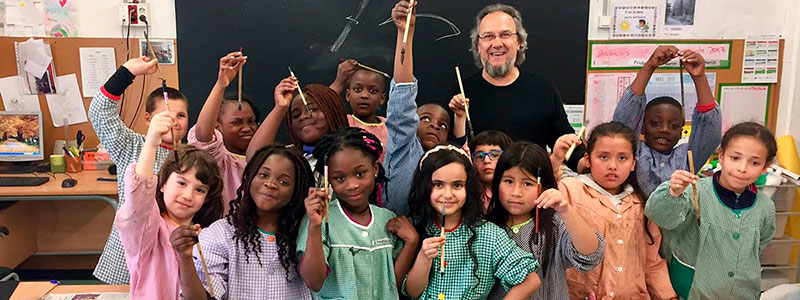
Social inclusion and emotional well-being of children: Sentx100
INTRODUCTION
SERVICE LEARNING: This is a SL project with the participation of Occupational Therapy students from UVic-UCC.
The project has obtained a National Award for Social Innovation from la Caixa, 2016-2017; as well as recognition by the Catalan Agency for Social Innovation (AQuAS). The UVic-UCC project has been funded by the “la Caixa” Welfare Projects Social Initiative Projects grant program.
The pilot project was carried out in the 2016-2017 academic year at the Escola de la Sínia, due to its innovative nature and its strong commitment to its students, led by Gina Codinachs; with the collaboration of Tàndem Social, CAP REMEI, and the Fundació Atlàntida. For the 2017-2018 academic year, it has the support of the Vetllada Cuina Solidaria.
On the one hand, the project seeks to give tools to children, teachers and families so that they can face the nutritional, psychosocial and economic problems they face, from an empowerment strategy based on training based on their great strengths and resources. . It started with two community diagnoses.
On the other hand, it aims to integrate research into social and wellness projects through the transfer of knowledge from the UVic-UCC to society. Once the project is finished, the researchers’ will is to be able to extrapolate it to other realities and contexts. In this sense, it is negotiating with new schools in Vic, in Osona (with the Consell Comarcal d’Osona) and in Manitoba (Canada).
NUTRITIONAL WELLBEING
The first activity of the project has been to diagnose the nutritional status of the students, consisting of conducting interviews with the mothers and fathers of the children to assess the degree of family food insecurity, and in an anthropometric study of the students at the center, with the WHO reference growth measures. Subsequently, a Food Living Lab has been created that has taught nutrition workshops to children and families where they will learn to develop a healthy diet with few resources. These activities have been carried out by UVic-UCC in collaboration with CAP Remei.
PSYCHOSOCIAL WELLBEING
The psychosocial project empowers children to manage their emotional well-being for children. It is based on principles of Occupational Therapy, the therapeutic use of art and Gestalt therapy, among others. At the extracurricular level, the Initial Cycle students have created a story that talks about their reality, coordinated by the writer Asha Miró, and the Upper Cycle students have worked on a play under the direction of the playwright Txema Segura.
Likewise, training in promoting psychosocial well-being has been developed for all teachers and emotional well-being workshops for all school children, where they learn to manage their own emotional well-being and help their peers.
See video sessions Emotional Wellbeing
The Art x Emotions workshop has been developed with all the second grade children. From the artistic avant-garde, children have learned in each session to manage a specific emotion. For example, from the Much “The Scream” painting, children have created a work of art based on this painting and have worked on feelings of fear and anxiety. The participation of artists such as Josep Maria Roma..
With the fourth grade students Karina Amato has developed a dance workshop, as an instrument of emotional expression.
ENTREPRENEURSHIP AND PROJECT CLOSING
Economic difficulties are fought with actions that promote an entrepreneurial culture. For this reason, sixth-grade children have participated in entrepreneurship workshops to work on generic skills such as conflict resolution or creativity.
Ver video talleres emprendimiento
The project concluded at the end of May with a performance by the students at the Teatre Atlàntida thanks to the collaboration of the Fundació Atlàntida. The Vic School of Music collaborated, led by Marc Vernis, Guillem Roma and Edna de Soul Sisters. David Conill has worked on the creation of a social documentary, which will be presented in the fall of 2017.
See video Last session on Atlàntida Theatre
This project was led by Salvador Simó. The initiative involves a transfer of knowledge from two UVic-UCC research groups: Mental Health and Social Innovation (SaMIS), which leads it and Methodology, Methods, Models and Health and Social Outcomes (M3O). It also has the collaboration of the Center for Sanitary and Social Studies (CESS) of the UVic-UCC, directed by Dr. Marina Geli. The project has had the support of the OTRI of the UVic-UCC, especially Montse Serra and Bet Dachs.
The participation of the Occupational Therapy students, Sara Roman, Mariela de Eguia, Ariadna Granados, Jaume Cases, Sara Veas, Alba Rosell, Fanny Vaillant, Zoé Rouyer, Eloi Bordas Pérez, Marine Dagnac, Audrey Delgado, Marina and Gerard Llosa .
Link (the project on Catalan TV).
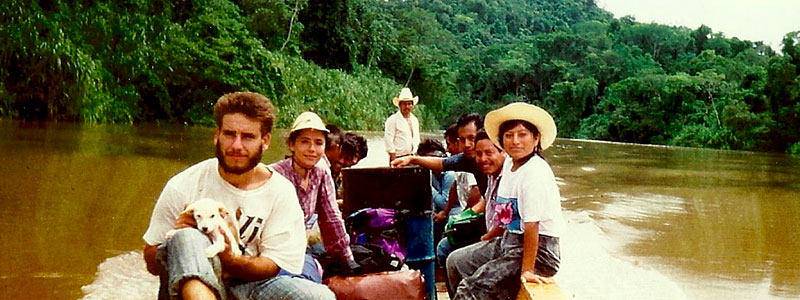
International cooperation: intervention with Mayan refugees
INTRODUCTION
The return of the corn man
An intervention project with a Mayan community of Guatemalan returnees
Photo gallery of the project
Article published at the Canadian Journal of Occupational Therapy
The greatest treasure I have in life is the ability to dream; In the hardest moments I have been able to dream of a more beautiful future1. Rigoberta Menchu
INTRODUCTION
In this section we describe an occupational therapy project developed in 1996 for six months, with indigenous Mayan families who returned to Guatemala after remaining 14 years as refugees in Mexico. Indigenous populations, when they are refugees as in this case, are at greater risk. An intervention from occupational therapy guided by the spiritual beliefs of the community can be a powerful force for change. The Mayan worldview was used to guide the project. Upon reconsidering the project nine years later, in light of a new understanding of the human and ecological genocide before us, the chapter encourages occupational therapists to be more aware of the need to develop cross-cultural, holistic, and focused interventions. in the community, and to work as social activists, fighting for occupational justice together with the populations we have the privilege to serve. In the present text, special attention is paid to spirituality and the development of an occupational ecology.
In 1996 José María Rodríguez, a social worker, and Salvador Simó Algado2, an occupational therapist, contacted the refugee organization Permanent Commissions and offered their services as volunteers. From there they developed a project working with Mayan refugees returning to Guatemala from Mexico. Both disciplines amalgamated, with the social worker focused on education through leisure.
History of conflict in Guatemala – a damaged land
Inhuman are his soldiers, cruel are his brave mastiffs3.
Guatemala became independent from Spain in 1821. Its political and economic system had been based on the exploitation of indigenous communities, and little changed until 1945, with the election of Juan José Arévalo and Jacabo Arbenz as presidents, in a period known as the “October Revolution”. Cardoza and Aragón4 describe this period as “the beginning of ten years of spring in the country of eternal tyranny”, which allowed the beginning of a union movement and agrarian reform, distributing part of the land among the poorest in the country, with which they returned to their true owners, the indigenous Mayans. In 1954, a conservative coup d’etat backed by the landowners, the ecclesiastical elite and the CIA cut short these advances and ended such progress5 and inaugurated almost half a century of military dictatorship.
In 1960, a revolution that had the support of Cuba failed. The guerrillas fled to the mountains, from where they continued a civil war against the Army. Beginning in 1962, the military intensified its campaign against the guerrillas. Between 1978 and 1983, the Guatemalan army followed a “scorched earth” policy in rural areas where Mayan Indians lived. A consequence of this was the destruction of 440 villages6,7, with 45,000 widows and 150,000 orphans5,8. There were 626 massacres attributable to government forces9. 200,000 Guatemalans were killed and between half a million and 1.5 million were displaced, according to the definition of displacement that is adopted9. The Mayan Indians began to flee to Mexico. The United Nations High Commissioner for Refugees (UNHCR) officially recognized 46,000 refugees. It was estimated that another 150,000 Guatemalans hid in the jungles around Chiapas, in Mexico10.
The improvement in the political situation made it possible for the Mayan refugees to return to their beloved land8, although in a not entirely certain way, when a definitive peace agreement was signed in December 1996, ending 36 years of war. Those who returned are known as returnees.
The corn man and the Mayan worldview
Today, the Mayan people constitute more than 55% of the Guatemalan population. Its history reflects a proud past cut short by four centuries of domination by Ladinos, people of European descent. The Mayans founded the first known communities in America, approximately in 2000 BC. C. About the year 100 a. C. Mayan territory was divided into a system of states, each organized according to its own complex social, political, and economic systems. The Mayans demonstrated advanced knowledge, particularly in painting, ceramics, mathematics, architecture, and astronomy. Our calendar is heir to Mayan astronomy, and we owe zero and the vigesimal and binary systems to its mathematics. Around the year 1500 AD. C., the Mayan civilization was in decline11 and the superior warfare technology of the Europeans facilitated its conquest. From the 16th century to the 19th century, the Mayans were forced to work on the plantations of the prosperous European landowners, in conditions that were not far from slavery.
The Mayan worldview: a source of healing
In the name of the heart of Heaven, in the name of the heart of Earth (Mayan Prayer) 3
Almost all indigenous cultures reflect the sacred reality of life. We can hear their voices, full of wisdom, saying: “I am all the forces and elements with which I am in contact. I am the wind, the trees, the birds, and the darkness ”12 or“ The sun, the moon, and the trees are symbols of my continuity ”13 (p.17). Our western societies, based on the economic values imposed by capitalism, have forgotten this sacred character.
The Mayans illuminated a system of myths of a holistic and religious nature that recorded their perception of the world, the scientific measure of time, the movement of the stars, and the path of the earth in the galaxy. Myths unite and link, they are possessors of a vital force that generates the roots of thought and behavior14.
A non-anthropocentric worldview was generated, where the multiple interdependence of beings is recognized. The cosmos is a changing and cyclical flow of energy. The universe is chaotic, generator of life and death, although within an order. Human beings and nature participate in the same cosmic essence: ajaw15.
Ancient manuscripts and oral tradition reveal this conception of interdependence. This parity, seen not only as unity of opposites, but as a movement of complements, was indispensable. Woman and man were conceived as two in one, as was the case with day and night, Heaven and Earth, birth and death. The interdependence and complementarity of women and men were expressed in daily life as the unity of the unequal. There was an imaginary woman-mother-earth-life-sacred reality16.
By Mayan worldview2 we understand an articulated system of ancient symbols and meanings that represent cognitive and existential aspects of the community and the individual. The worldview describes the place and purpose of all beings in the universe. It influences every human activity and includes convictions, beliefs, habits, roles, and feelings. As a Guatemalan friend said: “We are one with nature, we are unity in diversity.”
Mayan beliefs regarding the origin of the disease, the role of the individual in the universe, and the meaning of evil and suffering guided the development of the project. The author of this text learned about the Mayan worldview by spending several days with an Ajgij, or Mayan priest. The Mayans believe that their ancestor, Ixmucané, made man using white and yellow corn, and therefore they are named after the corn man.
Ajgij’s goal is to maintain harmony between human beings, nature and divinity. Loss of this harmony causes illness. As the Ajgij pointed out: “The Earth is my mother; Earth is a living being. She feeds me, I live thanks to her. We live thanks to the water, the wind, the fire, the rain… If a person turns his back on nature, he will fall ill without hope ”(personal communication, 1996). We are spiritual beings.
Mayan philosophy clearly establishes the role of each individual in the community: you must work for your community, contributing your talents and knowledge, focusing on cooperation and respect for life. Human beings must contribute to the universe through their abilities.
The meaning of suffering and the reason for the existence of evil were always present issues in the community, manifested in the violence suffered by the refugees. The Mayan philosophy addresses the problem of the existence of evil, so the Ajgij explained that “in the universe good and evil exist, in an eternal struggle, in which we participate, as did our predecessors and the rest of the sacred forces “(Personal communication, 1996).
As facilitators, using a community-centered approach, we try to develop the role of Ajgij in our new community in Guatemala. Bugental17 has pointed out that: “the therapists are the descendants of the ancient shamans”.
Life in the refugee camps
In order to learn about the history of the refugee community, we spent a few weeks in the Chiapas and Campeche refugee camps in Mexico. High rates of malnutrition, child mortality, alcoholism, disability and domestic violence coexisted in them18. In the face of the prevailing violence, the role of women was crucial, since the responsibility for the survival of their families and of Mayan society fell on them19,20.
The return of the corn man
We have always lived here, we have the right to continue living in the place where we are happy and where we want to die. Only here we can feel full, in no other place we would never feel complete and our pain would be eternal21.
The author of this text participated in two returns (the return of indigenous communities from the refugee camps to Guatemala) organized by UNHCR. Our first mission was to serve as human shields, protecting refugees through the international presence. We accompanied two groups from Mexico to the communities of La Quetzal and La Esmeralda, in Guatemala, which were not their communities of origin. They returned with contradictory sentiments, including insecurity and fear, to the country where the massacres had occurred, and where kidnapping, torture, and murder were part of daily life.
The new community
Bare land, awake land, land of corn that dreams … land of corn covered by rivers of green waters in the jungles that never sleep sacrificed by corn turned into corn sower21.
A contingent of approximately 210 families, around 1,200 people of different ethnic origins, mostly Mam, Quiche, Ka-chiquel, and some Ladinos, traveled to Quetzal, a new community built in the middle of the jungle. Life there was extremely harsh and during the rainy season, the community remained practically isolated. Food was scarce, many of the children were malnourished, and some died.
An O.N.G. It provided medical services, and the community was organized through a cooperative, the Unión Maya Itzá Cooperative. There was a women’s organization called Ixmucané, an association of adolescents called Maya Tikal, as well as health and education promoters. Our mission was to strengthen the associative fabric of the community so that they became the main protagonists of their own history, thus avoiding the creation of dependency.
THE INTERVENTION
THE INTERVENTION
Objectives of the intervention
The objectives of the project were established based on observations made in Mexico and Guatemala, as well as a visit to the Colegio de la Frontera Sur (ECOSUR), a research center dedicated to mental health studies based in Mexico. However, it was essential that these objectives were agreed with the community itself, through a series of meetings with the different groups representing it. This was a slow process, which showed us how important it is, sometimes, to forget our western mentality and adapt to the tempo of local communities. Table 1 contains a list of the problems that were detected.
Table 1. Identified problems
Children
Unlike children, parents and other adult family members had been direct victims of violence in Guatemala. These adults, in turn, transmitted part of their pain to the children, who then manifested secondary trauma, having been indirectly exposed to violence. This secondary trauma manifested itself in the form of malnutrition and mental health problems. Farias and Billings22 found that child malnutrition in the Chiapas refugee camps was clearly related to post-traumatic stress for mothers. Miller23 found a verifiable correlation between mothers ‘and daughters’ mental health.
The child community lacked any therapeutic attention, its education was formal and rigid, and it paid no attention to creativity and emotional development. Also, the children had not developed their cultural identity. One of the children suffered from cerebral palsy.
Teenagers
“Yes, I remember the trip. We went with our parents, carrying all our belongings. A man was shot in the back. The army chased us through the mountains, killing all those who could not run. My father took me; we ran fast. Those who lagged behind died. My father told me that they killed many women, and they also killed many children. ”(Testimony of a teenager) 24
The adolescents in the community presented symptoms of anxiety and anger. As they said: “For us young people, it is now when refugee life begins, when we return to Guatemala.” These young people had grown up identifying with the culture of North American influence typical of Mexican cities. Some were ashamed of their indigenous identity: “I am not indigenous; I want to be ladino. ” However, although they rejected the Mayan culture, it was evident that they did not know it.
The teens felt sad and scared at the same time. Many felt that their life plans had been cut short. A young man told us: “All I can do here is plant corn.” Others recalled the violence they had left behind, in Guatemala.
Adults
Here I feel desperate. There is only mud, snakes and malaria; my children are hungry. ”(Testimony of an adult)
Long-term symptoms of post-traumatic stress prevailed in the community, linked to the difficult psychological conditions associated with living as refugees and as returnees 24. Before leaving Guatemala, the vast majority suffered one or more traumatic experiences, including witnessing torture and Violations 25. The symptoms of post-traumatic stress flare up when returning to the place where the violence was experienced. As an adult said: “We have returned to the place where everything happened. The same soldiers who massacred us remain here. ”
The author’s previous experiences in the refugee camps in Bosnia and Mexico seemed to indicate that many adults sought to confront the situation by taking refuge in alcohol, the consumption of which is related to poverty in families and domestic violence. The continued loss of indigenous cultural identity further fueled this despair.
Elderly
“This is how we walk in life. My life is sadness. I can only wait for death. People say that the elderly are not worth anything. Nothing is as it used to be. They no longer respect you, they have forgotten what our ancestors taught us. ” (Testimony of an old man).
Life in the jungle was physically hard for the elderly. However, above all they expressed anger and pain because they had lost their traditional role in the community. The elders were seen as keepers of knowledge who played an important role in passing their wisdom on to generations to come. The loss of this role means both that the elderly feel useless within the community and that the community loses its ancestral knowledge.
Occupational therapy is art and science.
Our philosophy of intervention was based on a client / community centered approach 2.26-31 (see chap. 18) and on the development of holistic and cross-cultural occupational therapy 2.26-31 where meaningful occupation is the heart of the intervention.
Empathy, authenticity, and consistency are vital qualities. Communities have extraordinary potential, and the role of the occupational therapist is similar to that of a catalyst, facilitating change and working with resources already present in the community. We must promote both an internal locus of control and the responsibility of the community itself.
Holism means understanding the human being as a physical, psychosocial, and socio-political being, whose essence is spiritual, and who is immersed in an ecological and cultural environment.
Cross-cultural occupational therapy 2.26-31 does not just mean recognizing the beauty of all cultures, but including culturally significant occupations in our interventions. Significant occupation in a fragile balance where the person’s needs, potential and spirit come together. This definition includes the spirit of the person, because the spirit is our true self that we try to express in all our activities 32.
The project was based primarily on the Human Occupation Model (MOHO) 33. Table sets out its objectives using the MOHO framework.
Table 2. Project objectives
The volitional subsystem
The objective was to avoid the loss of objectives, interests and values. We help members of the community to analyze their new life situation in Guatemala, to look at their strengths, their problems, to identify new objectives and to face their new reality. We encourage the recovery of the values inherent in the Mayan culture and its worldview. Ultimately, we try to promote an internal locus of control through this strengthening, thereby ensuring that community members see themselves as the protagonists of their life story and as survivors. This is an important consideration in the field of humanitarian interventions, since a paternalistic stance has traditionally been adopted.
The habituation subsystem
The objectives were to encourage adolescents and teachers to assume the role of community promoters and to return the role of “guardians of ancient wisdom” to the elderly. Lastly, we try to discourage the proliferation of harmful habits such as alcoholism and its consequences (such as domestic violence) by promoting healthier lifestyles.
Realization subsystem skills
The goals were to develop new skills for emotional expression among children, to develop community advocacy and carpentry skills among teens, and for adult women to regain traditional knitting skills.
Environment
With the aim of fighting poverty, projects with the capacity to generate income were developed, such as the textiles or carpentry projects. One of the most significant objectives was to recover the cultural cycle of the community.
Intervention with children
We used the workshop called “Playing to grow” 34, training both community promoters and teachers in the development of this workshop. The children made contact with their cultural heritage through the legends and stories of the Mayan culture that the elders related to them.
An individualized intervention was performed with a 2-year-old boy with cerebral palsy. The boy’s parents and a man from the community were trained as rehabilitation promoters, using the methodology developed by David Werner 35, one of the founders of community-based rehabilitation.
Intervention with adolescents
The adolescents received training in carpentry and community promotion. Through carpentry they were able to earn money, as well as work for their community, since their first projects were creating wooden toys for children.
Working with adolescents (summarized in Box 25.3) gave us an opportunity to work from the feelings they had expressed. The procedure was indirect, since they were trained to deal with feelings such as anxiety, fear, and sadness. Our experience with Bosnian refugees had taught us that applying a clinical label to problems sometimes only serves to increase pain. Cultural workshops were launched, in which we compared western values with Mayan values, and organized visits to Mayan shrines, such as the one in Yatxilan. In this way, adolescents could regain the pride of being Mayan descendants, and were prepared to embrace the best of both cultures.
We focused our intervention on the prevention of alcoholism, and employed role-playing techniques that served as an introduction to discussions about alcoholism.
The learning took place over three months, each month dedicated to a different group: working with children, adolescents and adults. Twenty teenagers started the program, and twelve of them ended it. Adolescents participated in the selection of study topics (shown below):
Work with children
-Areas and phases of child development: physical, psychological, social, emotional
-Stimulate creativity
How to design a prevention workshop in the field of children’s mental health: ‘Playing to grow’
Preventive occupational therapy workshops through play.
Work with teenagers
– Mayan culture: Past: who were they? Philosophy and values
Present: the indigenous reality in Guatemala today
– Alcoholism and its prevention
– How to help teenagers who arrive with the new “returns”
Working with adults
– The role of the mental health promoter. The relationship between health and human occupation
– Main problems: post-traumatic stress disorder, depression, alcoholism, domestic violence
– Relaxation, emotional expression and listening techniques
It was very important that, before starting to help others, the adolescents who followed the training program reflected on their own experiences. They analyzed their feelings regarding their experience as refugees and their return to Guatemala. After the training, they were ready to help other teens who arrived with the new “returns.”
Interventions with adults
Like tears of a crying nation, this is how indigenous peoples express their passion for life and nature. It is the voice of the silenced Mayan nation that speaks through its work.
It was very important for women to realize that they could change their reality. A weaving workshop similar to those successfully organized by Simó Algado was organized in the Bosnian refugee camps. The women were able to carry out a significant occupation that allowed them to earn the money necessary to survive; In addition, it helped them to take their time purposefully and stop thinking about what they had lost. Women who knew how to knit taught their knowledge to those who did not know. In this way, and following the cross-cultural philosophy of occupational therapy, we help them recover this important aspect of their culture.
We carry out our work through the Ixmucané women’s organization. The adolescents from the community offered psychological support to the women. These adolescents had learned listening, emotional expression and relaxation techniques, and were also prepared to work with women’s thinking habits and knew the relationship between their thoughts, feelings and occupations. One of the weak points of the project was that, despite what we intended, it was not possible to also train the women of the association, because they had heavy family burdens, and needed to prioritize projects that generated money, such as weaving.
We work with teachers, and we provide them with training so that they can ensure the emotional well-being of children. Another major weakness of the project was that we were unable to work with the other men, as they spent the entire day working in the fields, so we were unable to develop an alcohol-related program for them. However, we believe that having rebuilt the cultural cycle and having recovered the traditional spirituality of indigenous communities such as the Mayan has a positive effect in the fight against alcoholism and addictions, which may be a consequence of the lack of meaning in your life. 36
Interventions with the elderly
Children, wherever you are, do not forget what lxpiacoc taught you, because it comes from the tradition of your ancestors. If you forget you will be betraying your lineage. 21
Our primary objective with the elders was to regain their traditional role as guardians and transmitters of ancient wisdom. Every week after mass the elders met with the adolescents to teach them Mayan traditions, legends and languages. In return, the teens cared for the older ones. The Council of Elders was created, where they could talk about their problems and how to solve them, and they could also discuss ways to continue working to preserve the Mayan culture.
REFLECTIONS
REFLECTIONS
The new context: a deepening human and ecological crisis
The components of the natural world are a myriad but they constitute a single vital system. We cannot escape our interdependence with nature: we are intimately interwoven with the Earth, the sea, the air, the seasons, the animals and all the fruits of the Earth. What affects one, affects the whole – we are part of a larger whole – of the planet’s body. If we want to survive we must respect, preserve and love its multiple expressions.37
Anthropologist Wade Davis explains that around the world, some 300 million people, approximately 5% of the world population, still retain a strong identity as members of an indigenous culture, with historical and linguistic roots, linked by myth and memory to a specific place on the planet. These cultures represent more than 60% of the total languages spoken in the world, and together they represent more than half of the intellectual legacy of humanity. However, their voices are increasingly muted.
Today, of the approximately 6,000 languages still spoken, experts consider only 600 to be stable and not at risk of disappearing. Davis38 maintains that a language is a flash of the human spirit, the filter through which the soul of each particular culture relates to the material world; a language is as divine and mysterious as any living creature.
In conclusion, Davis reflects on the price of this loss: “What is the value of family ties that alleviate poverty and save people from loneliness? What is the value of the various institutions of the cosmos, of the realms of the spirit, of the meaning and practice of faith? How to measure the economic value of a ritual practice that leads to the preservation of a river or a forest? ” (p.15)
Alluding to indigenous populations, Vandana Shiva39 assures that, since colonialism now receives the name of development, the process of exploitation is pervasive and is legitimized by international financial institutions. The most irreversible destruction is that of the cultural mechanisms of indigenous populations, mechanisms that protect both the population itself and its natural environment. When these disappear, how are we going to find someone to teach us how to walk on Earth gently?
The survival of indigenous cultures is related to the survival of the natural environment. Wilson40 states that the extinction rate is over 50,000 species per year, which means 137 species a day and 6 every hour. The author concludes that if human activities that overexploit the environment continue at the current rate, in 30 years 20% of the species on Earth will disappear.
Perhaps most significantly, the traditional assumption that humanity’s advancement and progress always involves loss has never been questioned.41 We do not understand that “you and I do not end up on our skin or on our fingertips, that we are connected through water, air and land; The same energy that comes from the same source in heaven gives us life. We are literally air, water, earth, energy and other living beings.42
It can be concluded that we are immersed in a cultural and ecological genocide, which is legitimized in the name of progress and that the political order is in charge of executing.
THE ROLE OF OCCUPATIONAL THERAPY
Occupational therapy professionals who deal with this genocide and work with its survivors should be aware of emerging issues such as those described below.
Culture and cross-cultural occupational therapy
Isabel Dyck43 defines culture as a shared system of meanings that “implies ideas, concepts and knowledge, and that includes beliefs, values and norms that shape the standards and rules of behavior of people’s daily life.”
Michael Iwama44 (p. 582) states that “in its current form and with the ideologies that underlie it, Occupational Therapy can be counterproductive; and it can even be oppressive for people who perceive, build and live their reality according to different beliefs, value systems and world views. ” And he adds: “if we want Occupational Therapy to become a universal service that benefits everyone, epistemological systems, theories and methods of practice that have greater cultural relevance will be required.”
To avoid falling back into the colonialist approach, Western occupational therapy professionals must be more aware that, in the development of their professional practice, the contextualization of the meaning of a culture is a fundamental concept. Thibeault and Fransen argue that the success of community-based rehabilitation interventions depends on keeping this factor in mind.
Cultural relativism asserts that fundamental notions about what is considered true, or morally correct, or about what knowledge or reality itself consists of, are social constructions and vary from culture to culture.45 Cultural relativism can help , but, as Galheigo suggests, it must be complemented with a human rights-based approach. We must develop a philosophy of cross-cultural occupational therapy, which introduces culturally meaningful occupations.
The political nature of human occupation
Cardona19,20 pointed out that politics deals with the capacity and power of individuals to build their own destiny. Occupational therapy professionals are concerned with empowering people to help themselves and lead meaningful and meaningful lives. It can be argued that indigenous populations around the world are restricted in these capacities, or denied the opportunity to develop them, because of disabling living conditions imposed by the human being himself.
These disabling conditions were called occupational apartheid by Kronenberg.26,46-52 Occupational therapy professionals involved in change processes aimed at overcoming these complex realities need to have a critical awareness of the political nature of human occupation, so that they can develop appropriate sociopolitical skills and roles.51,53-58 The social justice model of health, a participatory model applied to the community, can be a useful tool. Wilcock59 defines it as promoting economic and social change aimed at increasing individual, community and political awareness, as well as resources and equal opportunities in health
Occupational ecology
Wilcock59 argues that human occupation (in the sense of human activity) has been the main culprit for ecological degradation, and therefore it is urgently necessary to reconsider it and make the changes that lead to ecological rehabilitation.
Do Rozario60 established an ecological vision of occupational therapy by arguing that “occupational therapy professionals should work towards a harmonious relationship between people and the environment, and should do so by bringing individuals and communities closer to health, well-being and sustainability through interaction, occupation and socio-political action. ” This statement is consistent with the Ottawa Charter for Health Promotion61 guidelines, which identify the inextricable connections between people and their natural environment that form the basis of the socio-ecological approach to healthcare.
The ecological sustainability model of health, defined by Wicock59 (p. 240) as “the promotion of healthy relationships between human beings, other living organisms, their ecosystems, habits and ways of life” can be a useful tool for occupational therapy professionals. Based on the natural sciences and biology, it is a holistic model that has many points in common with social justice and community development62.
To establish a new relationship with other human beings, the environment and the cosmos, we must learn from indigenous peoples and from different worldviews, such as the East Asian worldview. Iwama44 describes the process as a way of considering deities, nature and humans as inseparable parts of a single entity, in which the existence of oneself is not more important than the existence of the next entity, be it a tree, a stone, a bird, or another person.
The author of this chapter defends the need to further develop the vision of an occupational ecology, and defines this last concept as an awareness of the cultural genocide we are facing, as well as taking proactive measures to, to through human occupation, restoring balance with the environment.
It is necessary to recover the connection with ourselves, the rest of humanity, nature and the cosmos. We can conceive occupation as a dialogue between the human being and the natural environment. If we want to survive, this dialogue must be based on veneration and respect. An Indian prayer says that “humans are neither better nor worse than a stone, but our mission is to sing, sing the World, sing Beauty” (unknown source). Occupational therapy can be powerful singing to preserve and celebrate the beauty of the world.
The meaning of suffering, the meaning of hope
Working with peoples like the Mayan returns means understanding the meaning of suffering. The words suffering and trauma may be straightforward, but they are very painful experiences. For each of us they describe personal and subjective realities. In my experience, suffering means feeling physical pain, that sadness becomes a faithful companion, long nights in the middle of a dark winter, my mind turned into a storm, feeling alone in the middle of a crowd, and asking myself for what should I follow.
When we face suffering we must feed the spirit with hope, for ourselves and for our traveling companions. And it is not easy. I will always remember the time Islam, an 18-year-old Muslim boy, told me how he had been tortured for 8 months in a concentration camp. I can still clearly see the tears running down her mother’s face. How can we convey hope in moments like this?
Nature can be our guide, teaching us that after a long night dawn comes, and that after the coldest winter comes joyful spring. This is the promise of nature, the promise of life. A day comes when sadness no longer accompanies you and spring returns to your heart; the storm abates, the light is bright, you have returned from the valley of tears.
CONCLUSIONS
CONCLUSION
The human being is part of the whole that we call the universe, a part limited by time and space. He perceives himself, his thoughts and feelings as something separate from the rest, which constitutes a kind of optical illusion of his consciousness. For us this illusion is like a prison that restricts our desires and our affections to a handful of people around us. Our task must be to free ourselves from this prison, and for this we must expand our circle of compassion until we embrace all living creatures and the whole of nature in all its beauty 63.
The problems faced by indigenous refugees test the capacity of occupational therapists, and require the use of holistic, community-centered and cross-cultural methods. They also test us as human beings. We live in the prison of illusion that Einstein mentions; Fighting for the survival of indigenous peoples and the environment means fighting for our own survival, because we too are at risk of extinction.
From indigenous peoples we must learn to walk carefully on Mother Earth, without stepping on the souls of future generations who are waiting their turn to live. We have inherited a world full of life and beauty, and we must return to its owners, our children, a world based on ecological sustainability, justice and love. As Thibeault64 says, we must become social activists so that, hand in hand with the communities we have the privilege to serve, we can together create a more beautiful future and we can move towards that occupational dream (see Chapter 9) called occupational justice.
We are challenged to take responsibility for our lives, develop a new point of view of our situation, and cultivate peaceful minds and the power of the heart.65 Demetrio Matias affirms: “in life you must sing with happiness, to pay homage to the beauty of the World, like flowers, like the breeze. Even in the midst of the tainted mist, we must shine like diamonds. ”66 (p. 17)
Walking with the Mayan community was a privilege full of beauty: learning that man is blue, because he is the heart of Heaven, and that woman is green, because he is the heart of Earth, and walking with survivors whose spirit is imbued in people in the community like José and Claudín, an elderly couple, or Francisca, whose son Vidal suffered from cerebral palsy. The images of José building his house or appearing with his yellow tricycle, or of Claudín preparing the corn, are unforgettable. Her faith and gratitude knew no limits. Francisca had previously lost a child in Mexico, but she struggled to care for her entire family in the midst of poverty, and was always eager to learn more about how to care for Vidal, or to help another member of the community. I thank you for the beautiful gift you gave me, a testimony of courage and love.
On behalf of all of mine people.
REFERENCES
REFERENCIAS
1. Menchú R, Burgos ER. Me llamo Rigoberta Menchú y así me nació la conciencia. Ciudad de Méjico: Trillas; 1998.
2. Simo Algado S, Rodriguez G, Egan M. Spirituality in a refugee camp. Can J Occup Ther 1997; 64(3):138–145.
3. Anónimo. El libro de los libros de Chilam Balam. Ciudad de Méjico: Fondo Cultura Económica; 1963.
4. Cardoza y Aragón L. Guatemala Las Lineas de su mano. 1ª Edición. Nicaragua: Nueva Nicaragua; 1985.
5. Woodward RL Jr. Guatemala. World Bibliographic Series. Oxford: Clio Press; 1992.
6. Barry T. Inside Guatemala. Albequerque, Nuevo Méjico: The Inter-Hemispheric Education Resource Center; 1992.
7. Falla R. Voices of the survivors: the massacre at finca San Francisco, Guatemala. Cambridge, MA: Cultural Survival; 1983.
8. Lovell WG. A beauty that hurts. Toronto: Between the Lines; 1995.
9. Oficina de derechos humanos del arzobispado de Guatemala. Guatemala: nunca más. Ciudad de Guatemala, Guatemala: Oficina de derechos humanos del Arzobispado de Guatemala; 1998.
10. Aguacayo S. Los refugiados guatemaltecos en Campeche y Quintana Roo. Ciudad de Méjico: El Colegio de México; 1989.
11. Sharer RJ. The ancient Maya. 5ª edn. Stanford, CA: Stanford University Press; 1994.
12. Curtis E. The North American Indians. Hong Kong: Aperture; 1972.
13. Pigem J, ed. Nueva conciencia. Barcelona: Integral; 1994.
14. Girard R. Origen y desarrollo de las civilizaciones antiguas de América. Ciudad de Méjico: Editores Mejicanos Unidos; 1977.
15. Hagen V. El mundo de los Mayas. Ciudad de Méjico: Editorial Diana; 1986.
16. Garza Tarazona S. La mujer mesoamericana. Ciudad de Méjico: Editorial Planeta; 1977.
17. Bugental J. The person who is the psychotherapist. Journal of Consulting Psychology 1994; 28(3):272–277.
18. Farias P, Arana M. Aspectos psicosociales de la desnutrición infantil entre los refugiados guatemaltecos en Chiapas. Segundo congreso nacional de salud publica. Cuernavaca, Méjico: 1991.
19. Meléndez Cardona CE. Análisis situacional de ciudadanos mexicanos y refugiados guatemaltecos en el sureste de México. Documentos internos. Ciudad de Méjico: Centro Mesoamericano para la Promoción y Educación Rural Asociación Civil (CEMPERAC); 1996.
20. Meléndez Cardona CE. Planteamiento estratégico: refugio, retorno, reinserción de población guatemalteca. Documentas internos. Ciudad de Guatemala: Asociación de Refugiados Dispersos de Guatemala (ARDIGUA); 1999.
21. Anónimo. Popol Vuh: el libro sagrado de los mayas. Ciudad de Méjico: Oasis; 1977.
22. Farias P, Billings D. The impact of refugee women’s social status on psychological health, child mortality and malnutrition. Ponencia presentada en el Congreso Internacional de Antropología y Ciencias Etnológicas: Desplazamiento, La Mujer y la Crisis Global. Ciudad de Méjico. 1993.
23. Miller KE. The effects of state terrorism on children. Child Development 1996; 67:89–106.
24. Saenz I. Listening to the refugees: Guatemalans in Mexico. Links 1992/1993; 9(5):24–25.
25. Melville M, Lykes B. Guatemalan Indian children and the sociocultural effects of government-sponsored terrorism. Social Science & Medicine 1992; 34:33–48.
26. Simó Algado S, Mehta N, Kronenberg F, y col. Occupational therapy intervention with children survivors of war. Can J Occup Ther 2002; 69(4):205–217.
27. Simó Algado S, Thibeault R, Urbanowsky R, Kronenberg F, Pollard N. La terapia ocupacional en el mundo penitenciario. Terapia Ocupacional 2003; 33:10–20.
28. Simó Algado S. El retorno del hombre de maíz, intervención desde la terapia ocupacional con una comunidad indígena maya. Terapia Ocupacional 2002; 28:30–35.
29. Simó Algado S, Mehta N, Kronenberg F. Niños supervivientes de conflicto bélico. Terapia Ocupacional 2003; 31 (Abril):26–40.
30. Simó Algado S, Kronenberg F. Intervención con una comunidad indígena maya. Materia Prima 2000; 16 (Agosto):28–32.
31. Canadian Association of Occupational Therapists. Occupational therapy guidelines for client-centerd practice. Toronto, ON: CAOT Publications ACE; 1991.
32. Egan M, DeLaat D. Considering spirituality in occupational therapy practice. Can J Occup Ther 1994; 61(2):95–101.
33. Kielhofner G. A model of human occupation: theory and application. 2ª edición. Baltimore, MD: Williams & Wilkins; 1995.
34. Miller KE, Billings DL. Playing to grow: a primary mental health intervention with Guatemalan refugee children. American Journal of Orthopsychiatry 1994; 64:346.
35. Werner D. El niño campesino discapacitado. Palo Alto, CA: Fundación Hesperian; 1990.
36. Frankl V. El hombre en búsqueda de sentido. Barcelona: Editorial Herder; 1964.
37. Campbell B. Human ecology – The story of our place in nature from prehistory to the present. Nueva York: Aldine de Gruyter; 1983.
38. Davis W. Light at the edge of the world. Vancouver/Toronto: Douglas & McIntyre; 2001.
39. Shiva V. El vínculo sagrado con la tierra. En: Pigem J, ed. Nueva conciencia. Barcelona: Integral; 1994.
40. Wilson EO. The diversity of life. Cambridge, MA: Harvard University Press; 1992.
41. Livingston J. One cosmic instant. Toronto: McClelland & Steward; 1973.
42. Suzuki D. The sacred balance. Vancuver/Toronto: Greystone books; 2002.
43. Dyck I. Multicultural society. En: Jones D, Blair SE, Hartery [?] Jones TRK, eds. Sociology and occupational therapy. Londres: Harcourt Brace; 1998:67–80.
44. Iwama M. Toward culturally relevant epistemologies in occupational therapy. Am J Occup Ther 2003; 57(5):582–587.
45. Marshall RC. Review of the myth of Japanese uniqueness. Journal of Japan Studies 1989; (15): 266–272.
46. Kronenberg F. Street children: being and becoming. Estudio de investigación. Heerlen, Holanda: Hogeschool Limburg; 1999.
47. Kronenberg F, Simo Algado S. Overcoming occupational apartheid: working towards occupational justice. Ponencia presentada en el VI Congreso Europeo de Terapia Ocupacional. París. 2000.
48. Pettersen BH. Dolphin: arbeider mot aktivitetsapartheid. Ergoterapeuten 2000; 43(11):7–10.
49. Tilburg van O. Dolphin en de strijd tegen occupational apartheid. Holanda. Tijdschrift voor Ergotherapie 2001; 29(4):141–144.
50. Kronenberg F. Juggling with survivors of the street: occupational therapy and clowns in Guatemala City. Ponencia presentada en el XIII Congreso Mundial de Terapia Ocupacional. Estocolmo 2002.
51. Kronenberg F. In search for the political nature of occupational therapy. Ponencia para Master en Ciencias de Terapia Ocupacional (no publicada). Universidad de Linkoping, Suecia. 2003.
52. Kronenberg F. Occupational therapy without borders: occupational justice education. Ponencia presentada en IX Congreso de la Red Europea de Terapia Ocupacional en Educación Superior. Praga. Octubre/Noviembre 2003.
53. Kronenberg F. Understanding and facing up to the political nature of occupational therapy. Ponencia presentada en el VII Congreso de Terapia Ocupacional. Atenas. Septiembre 2004.
54. Kronenberg F. WFOT position paper on community based rehabilitation. Forrestfield, Australia: WFOT; Abril 2004.
55. Kronenberg F. WHO International Consultation on CBR Helsinki. Forrestfield, Australia: WFOT; Augosto 2003.
56. Cockburn L, Trentham B. Participatory action research: integrating community occupational therapy practice and research. Can J Occup Ther 2002; 69:20–30.
57. Urbanowski R, Kronenberg F, Pollard N, Simo Algado S. The politics of occupation. Ponencia presentada en el II Simposium de Ciencia de la Ocupación de Canadá, Toronto, May 2004.
58. Goldstein J. International relations and everyday life. In: Zemke R, Clark F, eds. Occupational science: the evolving discipline. Filadelfia: FA Davis; 1996.
59. Wilcock A. An occupational perspective of health. Thorofare, NJ: Slack; 1998.
60. Do Rozario L. Conferencia inaugural. Purpose, place, pride and productivity: the unique personal and societal contribution of occupation and occupational therapy. Actas de XVII Conferencia de la Asociación Australiana de Terapia ocupacional. Darwin. 1993.
61. World Health Organization. Health and welfare Canada. Ottawa charter for health promotion. Ottawa, Canadá: Canadian Public Health Association; 1986.
62. Potter VR. Bioethics, the science of survival. Perspectives in Biology and Medicine 1980; 14:127–153.
63. Einstein A. Cita en Walsh MD, Vaughan F. Paths beyond ego. Los Angeles: The Putnam Publishing Group; 1993:266.
64. Thibeault R. Experimental and philosophical considerations on occupation and the genesis of meaning and resilience. In: McColl MA, ed. Spirituality and occupational therapy. Ottawa: CAOT; 2003.
65. Kornfield C. Périlles et promises de la vie spirituelle. París: Editions de la Table Ronde; 1998.
66. Matias D. Brillar como diamantes. En: Pigem J, ed. Nueva conciencia. Barcelona: Integral; 1994.
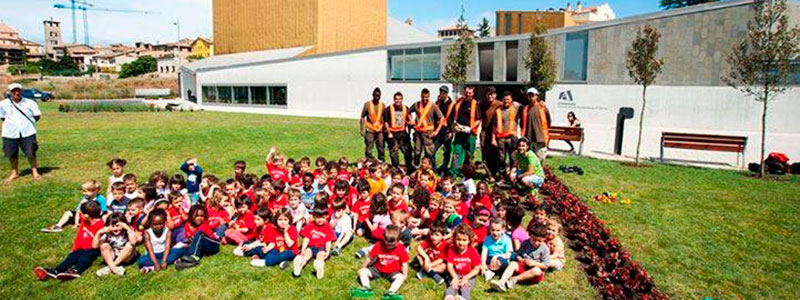
Service Learning
INTRODUCTION
INTRODUCTION SERVICE LEARNING
As teachers we have to prepare students for the risk society (Beck, 1998). We live immersed in a liquid modernity (Bauman, 2005), marked by declining citizenship and a serious economic, ecological and social crisis. Unemployment coexists with job insecurity, in a process of Brazilianization of the European labor market (Beck, 2000). A job that loses its ethical references and causes corrosion of character (Sennett, 2006). Economic globalization has not been accompanied by a globalization of human rights (DH). Citizens face these risks from solitude, without the protection of a welfare state in the process of dismantling (Bourdieu, 1999).
As Boff (2000) rightly says, suffering rather than admiration makes one think. In this context, Said (2006) questions the role of intellectuals who, out of interest, remain silent, committing a crime of silence (Mayor, 2006). Faced with this scenario, the University, within the framework of the new European Higher Education Area (EHEA), must establish itself as the engine of civil society and courageously tackle the global challenges of our time. We must train professionals capable of working in multidisciplinary teams, from an understanding of the current complex problem, with the skills to improve it. The objective is not limited to understanding the world, but to transform it (Marx, 1988).
UNIVERSITY SERVICE LEARNING
The University Service Learning (ApS) is a methodology that helps us create a University committed to society. Following the work of Manzano (2010) we can affirm that the ApS model integrates theory with practice, training with commitment (Speck, 2001), cognition with emotion (Butin, 2006). The ApS is a teaching method that guides academic achievement towards the construction of citizenship through community service (Coles, 2005). We could define the ApS as a solidarity service program led by the students, oriented to effectively serve the needs of a community, and planned in an integrated way with the curricular content in order to optimize learning (Ramson, 2009). Most of the literature shows the effects on students (personal efficacy, identity, moral development), social (reduction of stereotypes, intercultural understanding, social responsibility, citizen skills, commitment), of learning (academic results, application of learning in the real world, critical thinking, problem analysis, understanding complexity). The first author’s research has shown how it positively affects not only education and the feeling of citizenship, but also the well-being of students (Simó Algado, 2010). This learning with a high ethical content, in values, makes more sense in the framework of a hedonistic society that reduces bios politikos to homo consumerns, marked by a lax ethic that leads to the decline of duty (Lipovetsky, 1994), based on the cult of the ego. It seems as if those values that make the world habitable little by little are decomposing, under the action of the ferment of consumerism and individualism. In this context, educating in a cosmopolitan citizenry seems foolish. But, as Kant (1991) indicated, we have to educate thinking about the best possible situation in the future. There is no better way to materialize an ideal than to educate to achieve it. Time to forge the character of the students from ethics, from morals. The world cannot be transformed from demoralization, but from people who pass from spectators to moral actors.
ESCORIAL PROJECT
PARTNERS: ESCORIAL SCHOOL – UVIC – VIC CITY COUNCIL
Related to the Eco-Sportech project, an ApS project has been developed with the ESCORIAL school in Vic, in collaboration with the UVic and the Ajuntament de Vic. In it, the participation of schoolchildren has focused on two levels:
– The children of 3rd and 4th: For two years they have carried out activities in relation to the environment and sustainability. They have participated in the seasonal planting in the Garden of the Arts, it is an open garden for the whole community in front of the Performing Arts Center La Atlántida de Vic. They also participated in the creation of the Olive Tree of the Earth, where they wrote messages and wishes of sustainability. It is noteworthy that they placed them in the olive tree with their own parents. In total, more than 200 schoolchildren have participated.
– Schoolchildren of 5th and 6th: Their intervention has been organized through three axes:
Nature
The students have carried out ecological awareness tasks with the community. They are monitoring the biological state of the river as it passes through the city. From their fieldwork they have created an informational plan, they have also created a website with this information. It is also available in English. About 120 students have participated in the project from the subjects of the natural environment.
Art
The students have worked throughout the year on the concept of Land Art in the framework of the plastic subjects. His work has ended with various performances and Land Art works in the city, in order to raise awareness in the community about the value of ecology. About 120 students have participated in the project.
Sport
The students have worked in groups to design physical exercise spaces for the community integrated into the natural environment. About 120 students have participated in the project.

